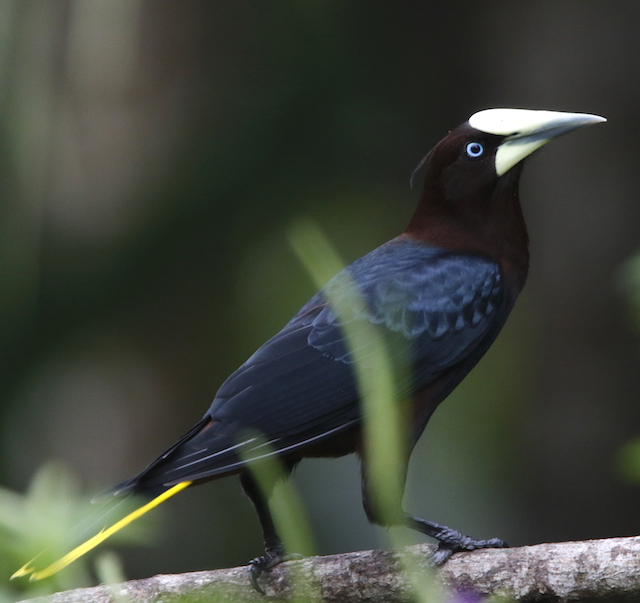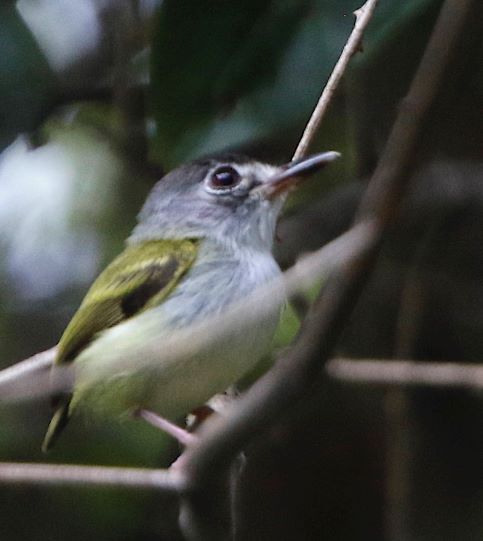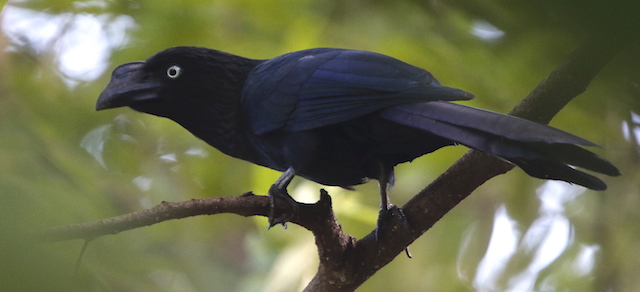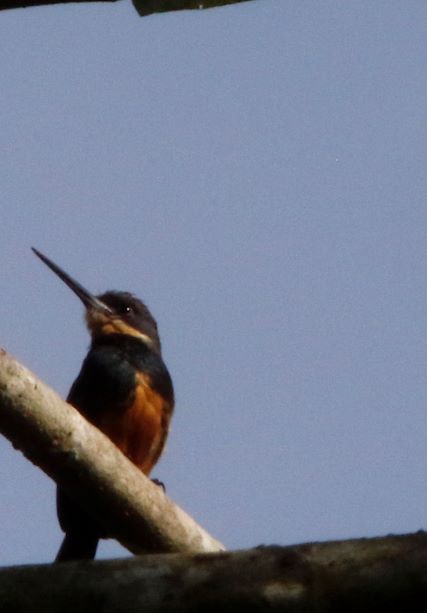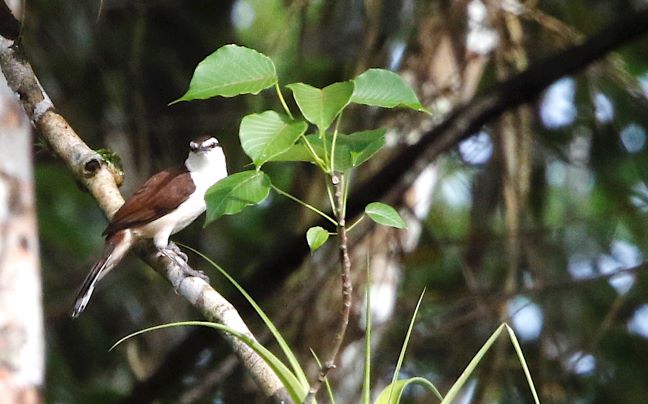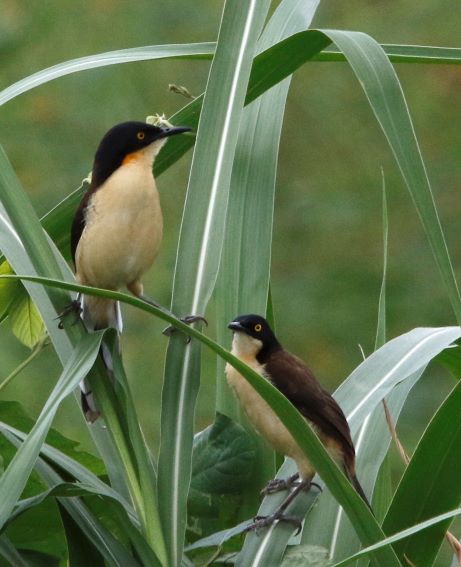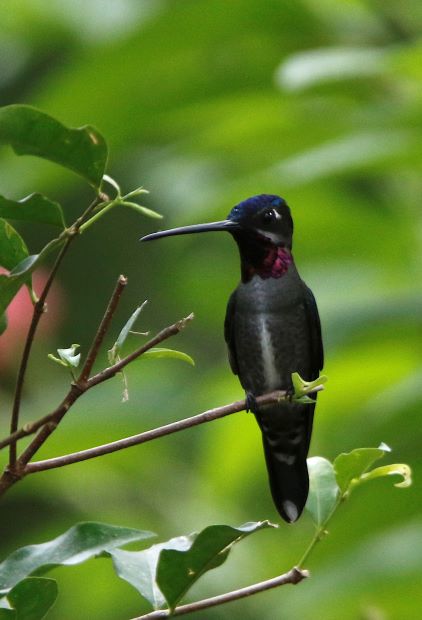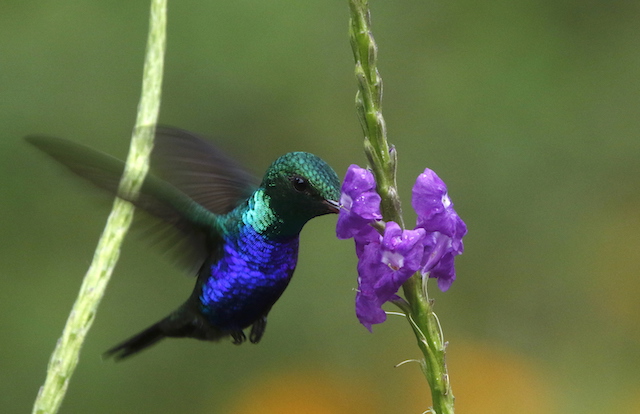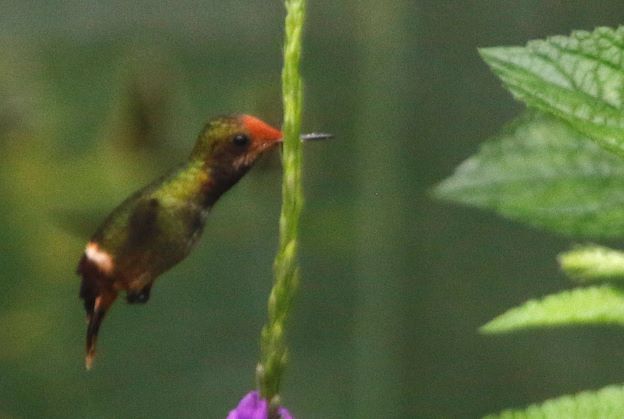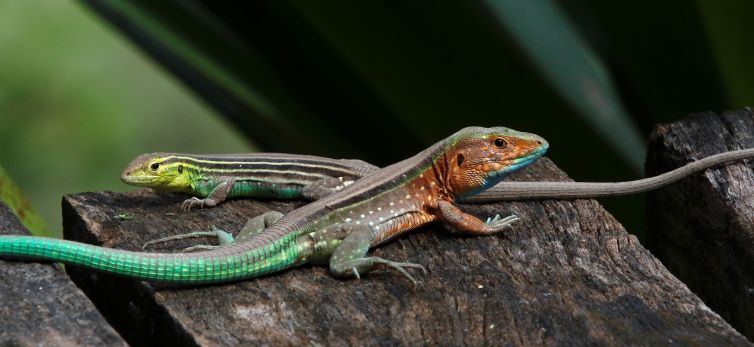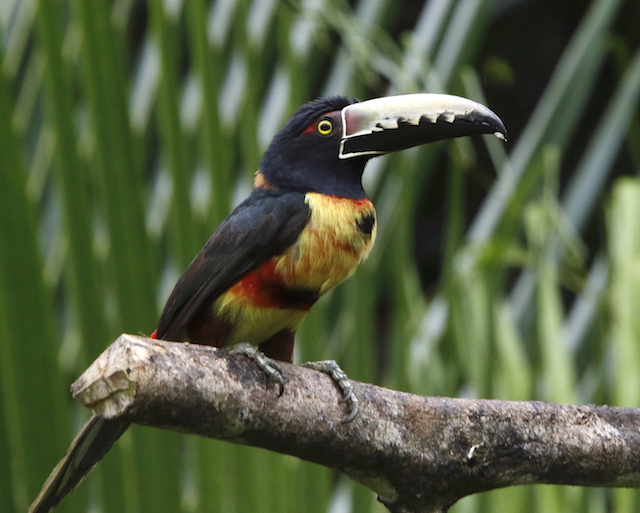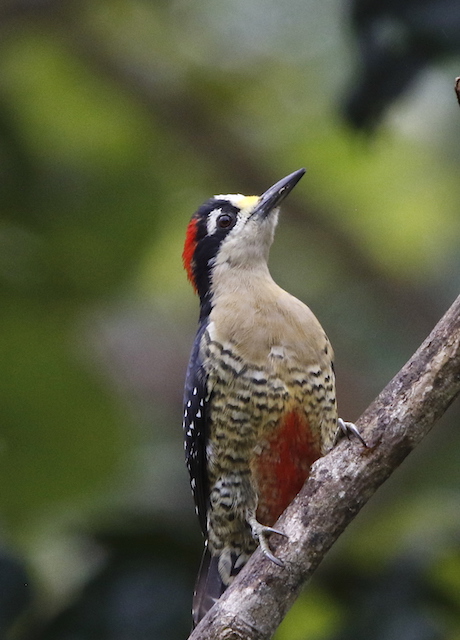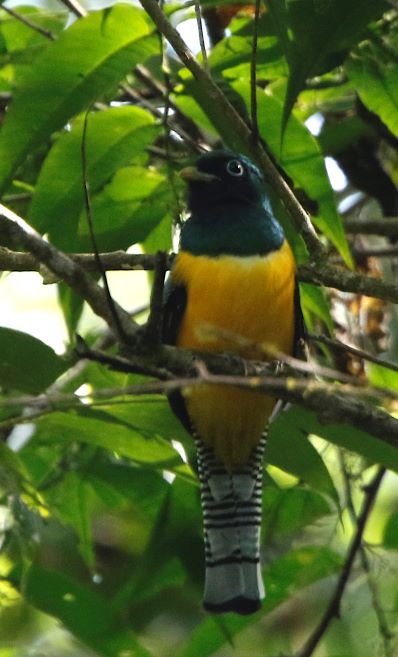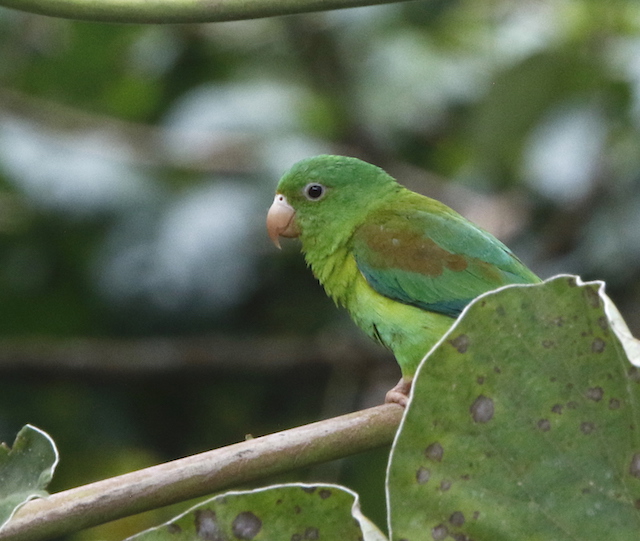From the Field
February 23:
Steve Howell reports from our recent Honduras tour...
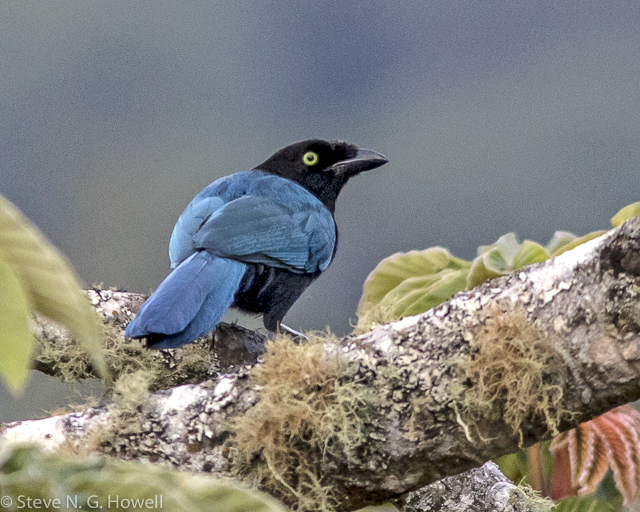
... which started on a great note with the regional endemic Bushy-crested Jay at our first hotel.
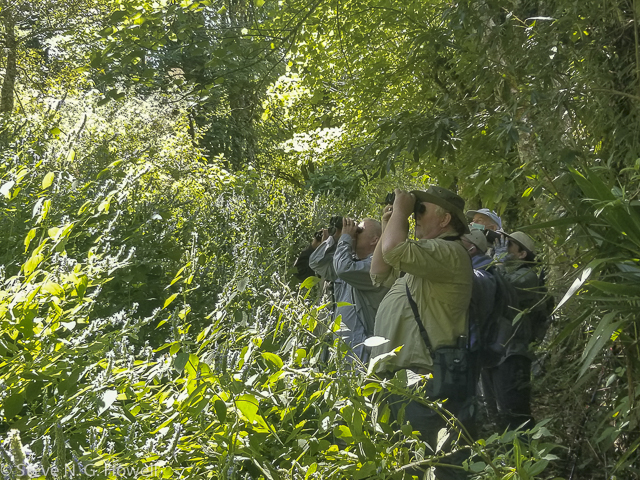
In the cloud forest of La Tigra Nation Park, here the watchers...
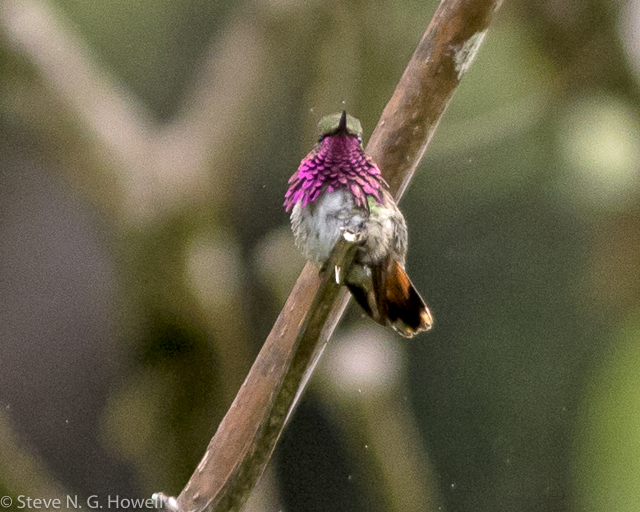
And here the watched, the tiny but dazzling Wine-throated Hummingbird.
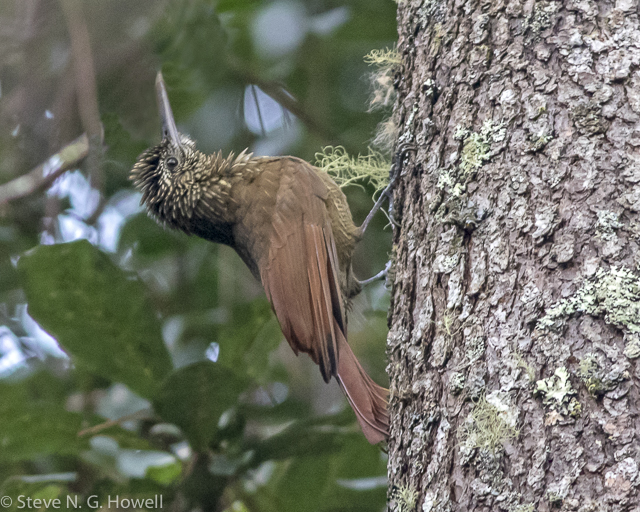
Arguably the rarest bird of the tour was the very poorly known puncticollis (appropriately meaning ‘spot-necked’) taxon of Black-banded Woodcreeper, endemic to northern Middle America and surely a species split—when somebody gets around to it.
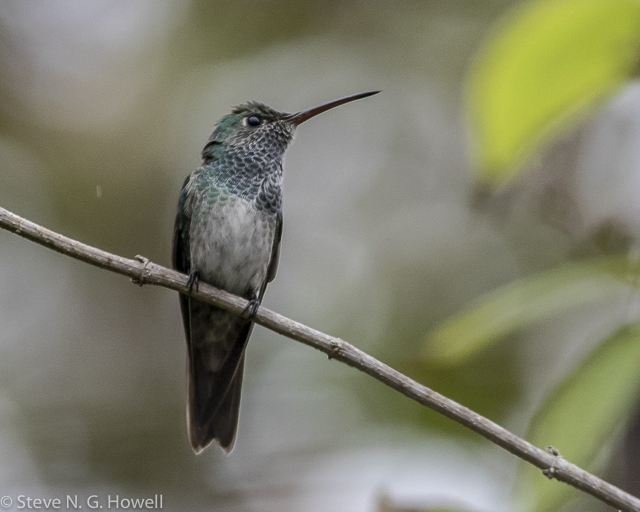
No birding trip to the country is complete without seeing Honduran Emerald, the only bird species endemic to Honduras.
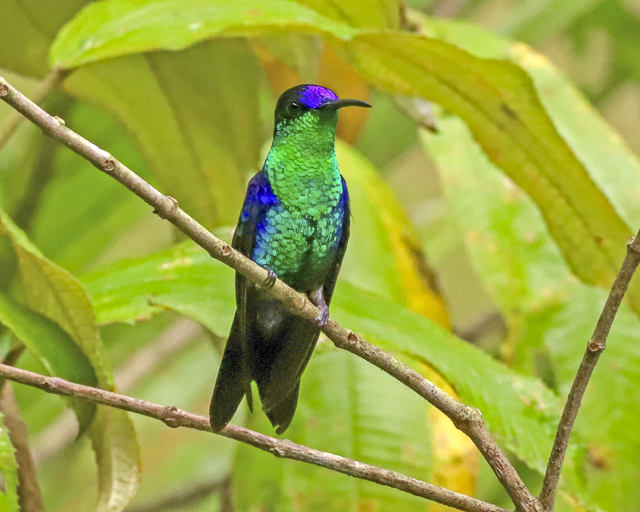
Although other hummers may be flashier, such as this male Crowned Woodnymph... Photo by tour participant Anthony Collerton
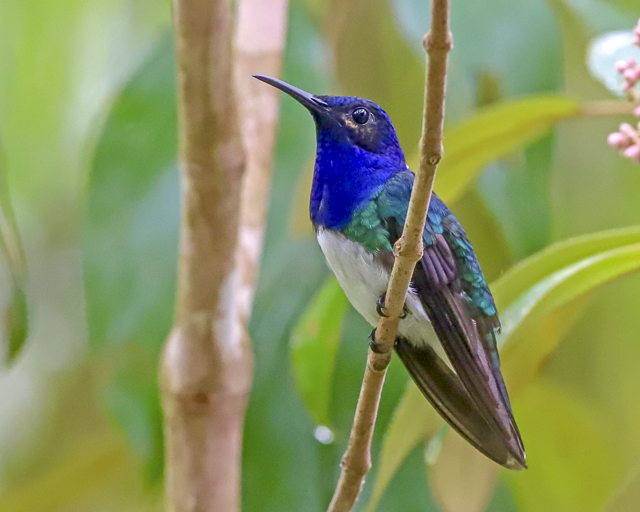
Or the simply stunning White-necked Jacobin. Photo by tour participant Anthony Collerton
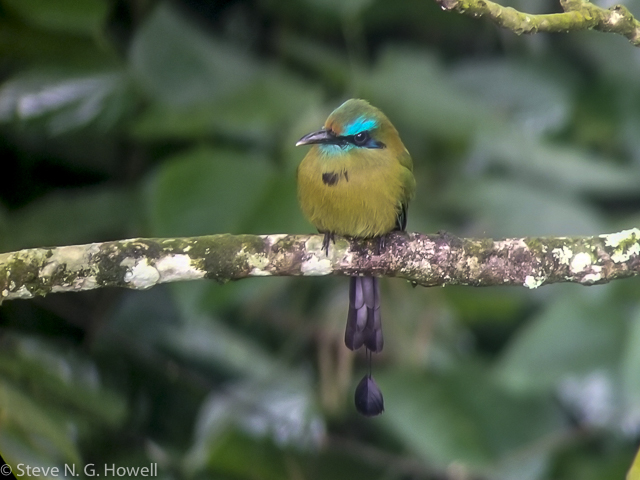
Honduras is the land of motmots, and we enjoyed excellent views of four species, including the local Keel-billed Motmot...
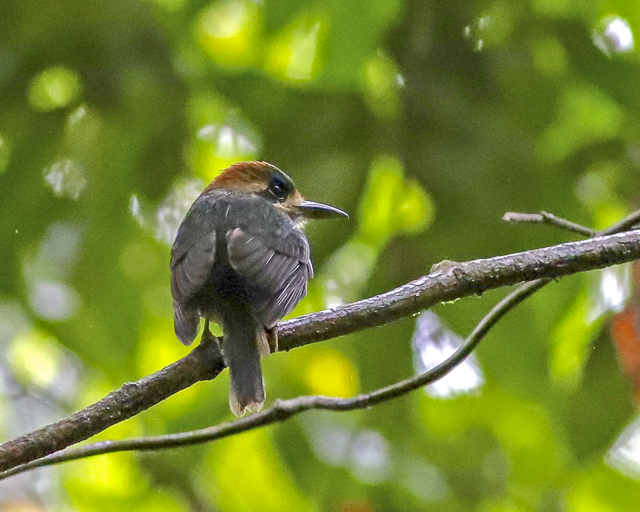
And the diminutive Tody Motmot. Photo by tour participant Anthony Collerton
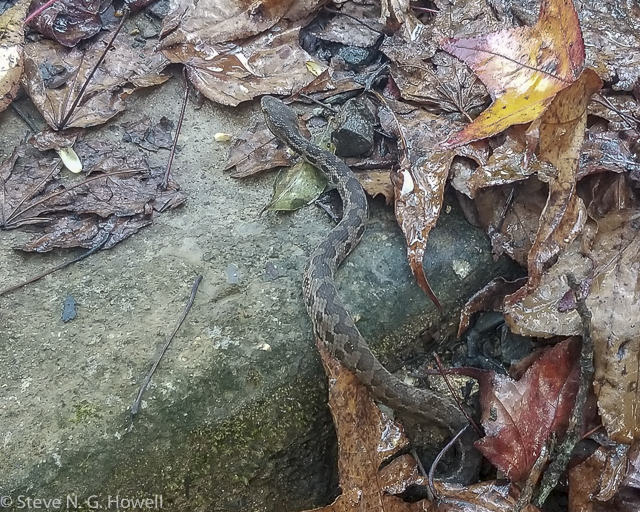
Non-avian highlights included this Wilson’s Montane Pit Viper at La Tigra...
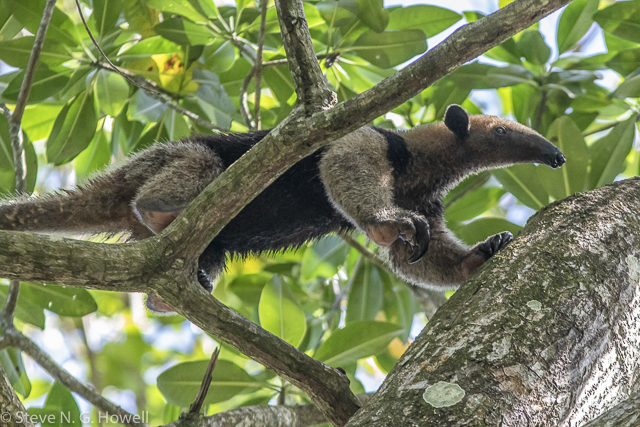
Prolonged views of this Northern Tamandua...
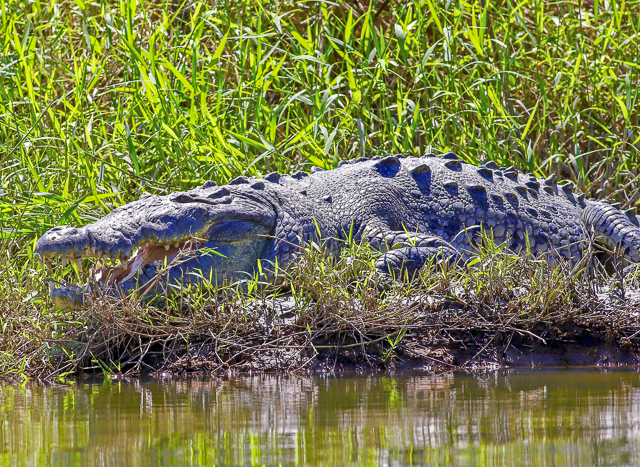
And an impressively large American Crocodile, too big to fit all of it in the frame! Photo by tour participant Anthony Collerton
February 1:
Jake Mohlmann reports from sunny Arizona.
We just wrapped up another successful WINGS Arizona in Winter tour through the southeastern portion of the state. Just over 1,000 miles of scenic roads were covered, exploring an assortment of habitats from the cactus-studded Sonoran Desert to the snow-capped peaks of the surrounding sky island mountain ranges.
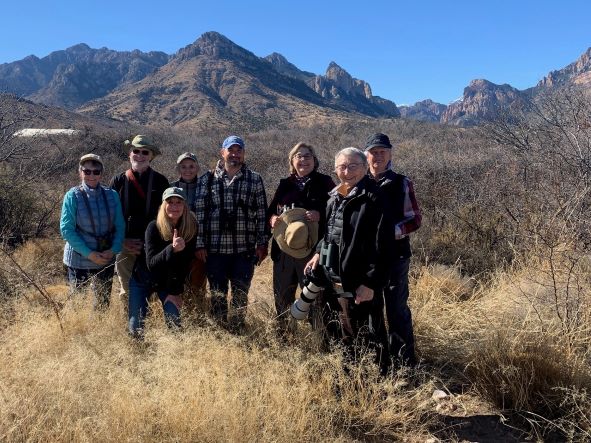
Our excited group ready to explore Cave Creek Canyon
A major highlight for the group was chasing down birds in the upper reaches of the Chiricahua Mountains. The 2-track that leads up to the pine forests here gave us a chance to find a major target bird for any North American birder. Eventually some call notes led us to a flock that contained our quarry as we enjoyed eye level views of a small group of Mexican Chickadees in the only place that’s publicly accessible to see this very local species.
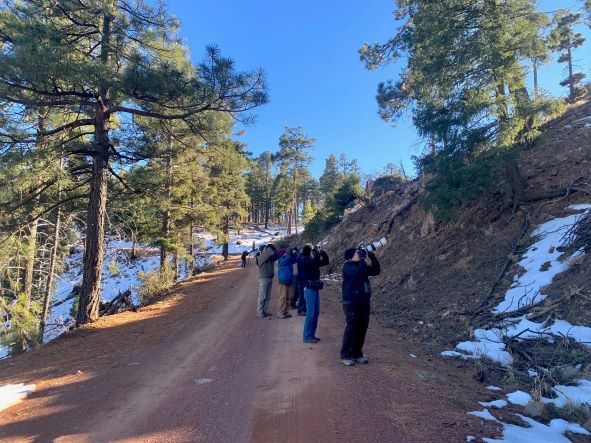
Birding the Chiricahua pine forests is the only accessible spot …
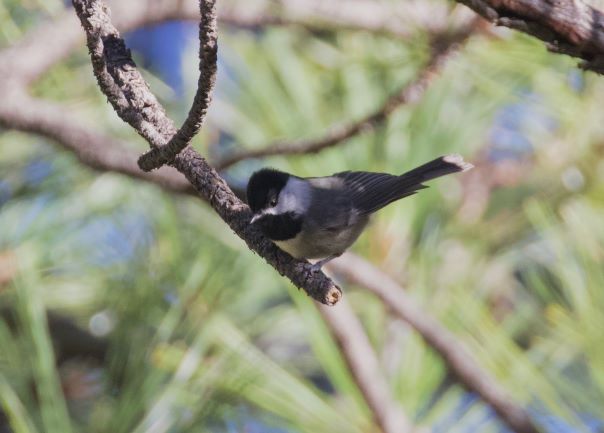
… to see the Mexican Chickadee, of which we saw 4.
Being based out of an extremely comfortable bed and breakfast for the week was a nice feature, and gave us refuge at the end of the days to have home cooked meals and a fireplace to sit next to for reviewing the checklist every night. It also gave us lots of time to enjoy the showy birds that call this part of the country home, such as numerous days viewing both female and bright male Pyrrhuloxias at the feeders.
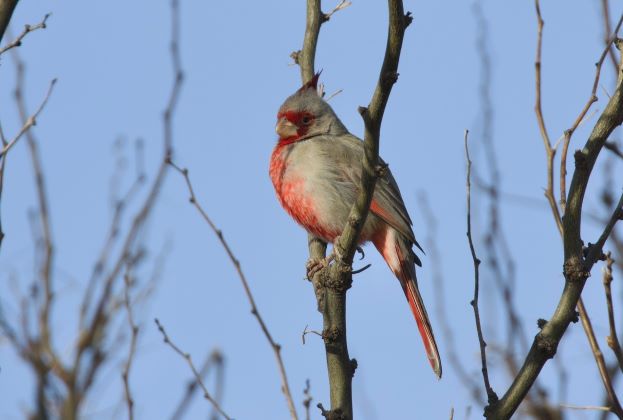
A male Pyrrhuloxia in the morning light.
To say the Sandhill Crane spectacle we witnessed was amazing would be an understatement. Our perfectly timed outing had us standing on a berm abutting a giant wetland where thousands of cranes came pouring in for hours, filling the skies of the giant Sulphur Springs Valley with a cacophony of bugling adults and whistling young.
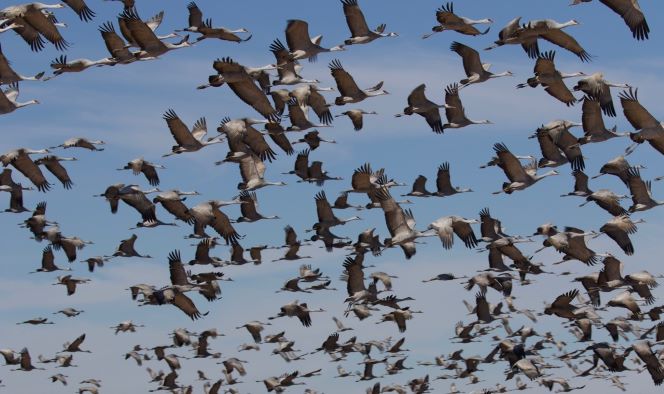
Sandhill Cranes filled the skies of Sulphur Springs Valley
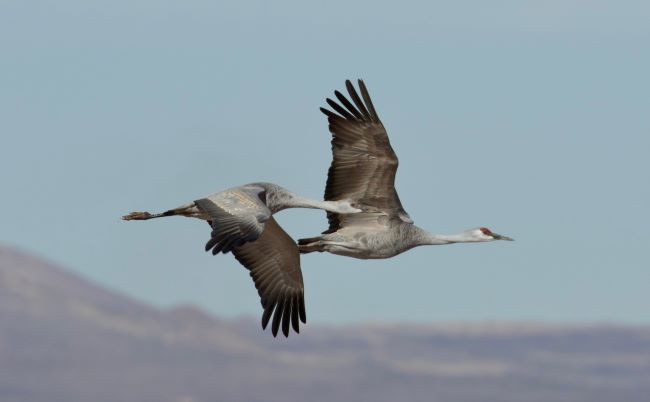
Both young and adult cranes flew by extremely close
Even the numerous parks around Tucson hold highlights this time of year. One never knows what will show up in these urban oases, but usually there’s something exciting to track down. As was the case this year when a couple of ‘pip pip pip’ notes led us right to the location of a wintering Greater Pewee seeking refuge from the wind near Reid Park, placed in the heart of the city.
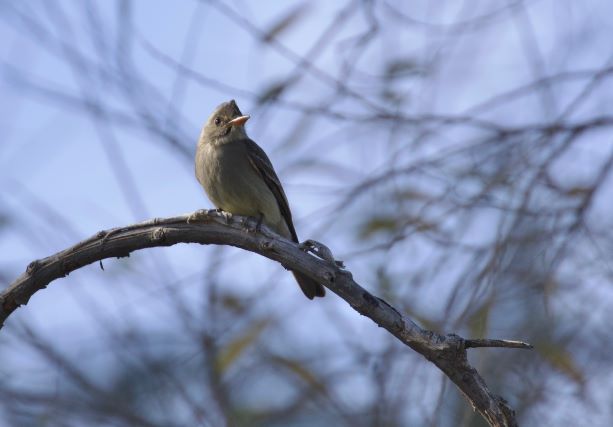
This Greater Pewee was utilizing a small pond in the middle of Tucson.
January 31:
Steve Howell reports from San Blas, Mexico
Steve is heading home after finishing two consecutive tours to this wonderful destination. Both tours were the same in that they were similar yet also quite different—you never see ‘everything’ on a single tour, but with two combined we really didn’t miss much.
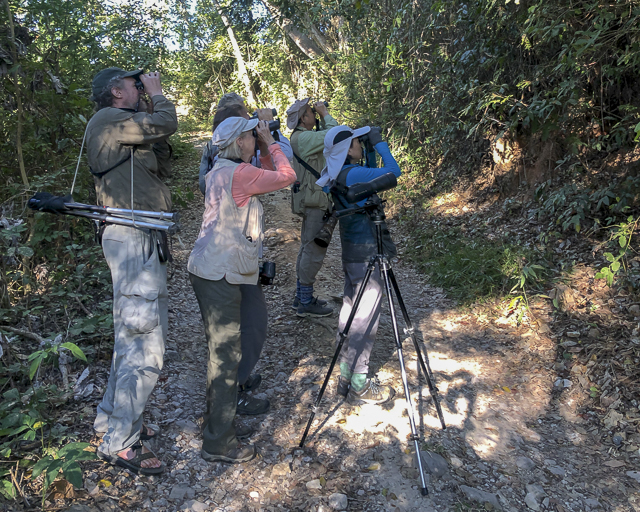
Just another day birding in tropical sunny Mexico (photo by Luke Seitz)
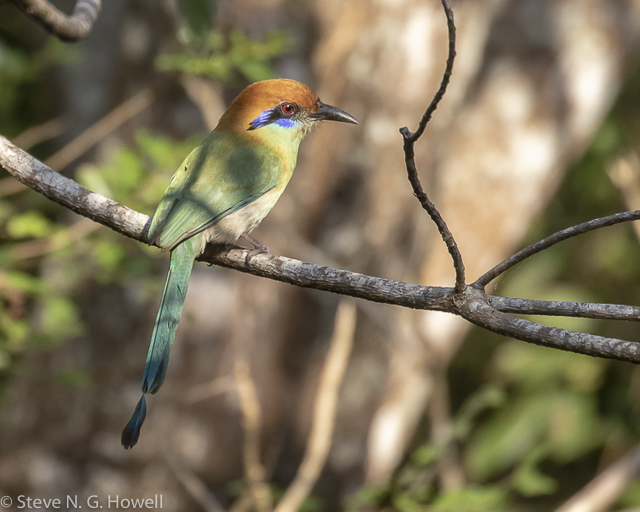
Highlights of both included classic species such as Russet-crowned Motmot
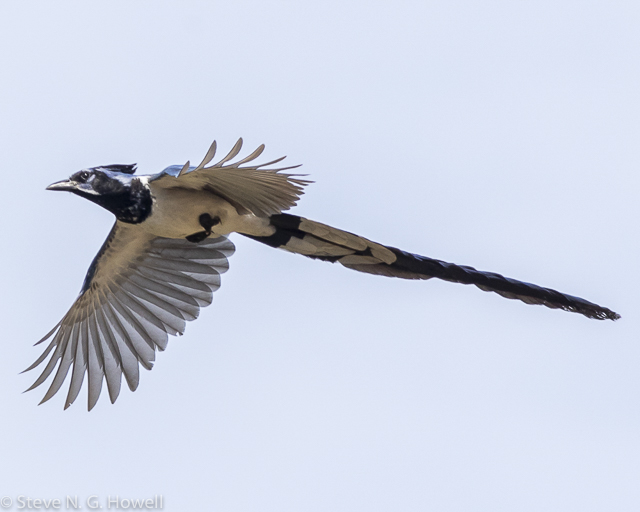
the stunning Black-throated Magpie-Jay
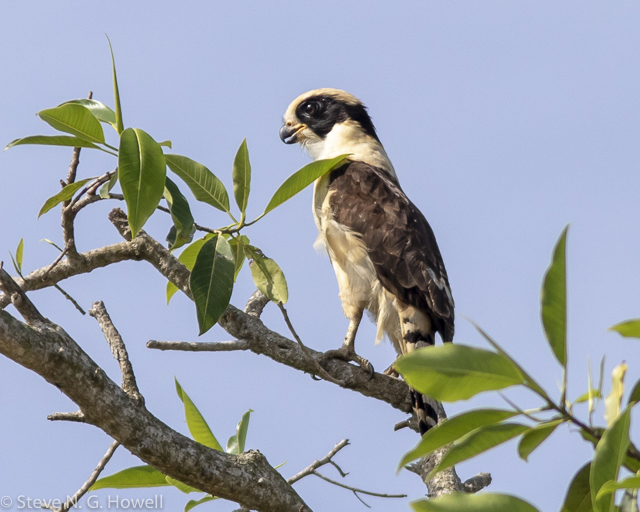
the handsome Laughing Falcon
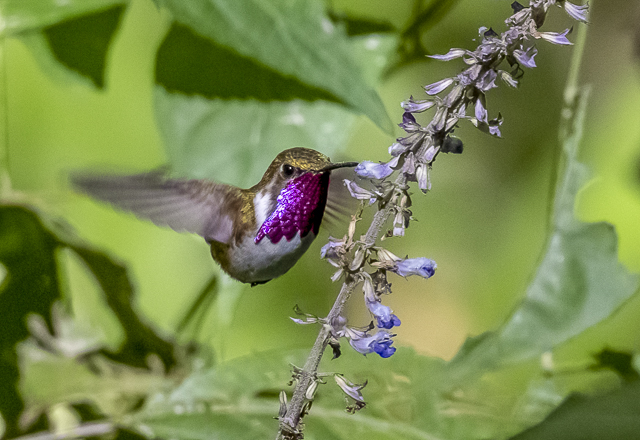
and the tiny Bumblebee Hummingbird. Photo by participant Li Li.
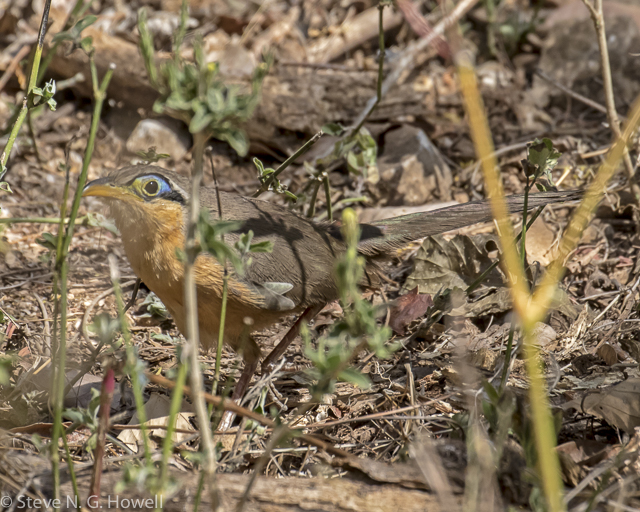
The first group enjoyed close studies of Lesser Ground-Cuckoo...
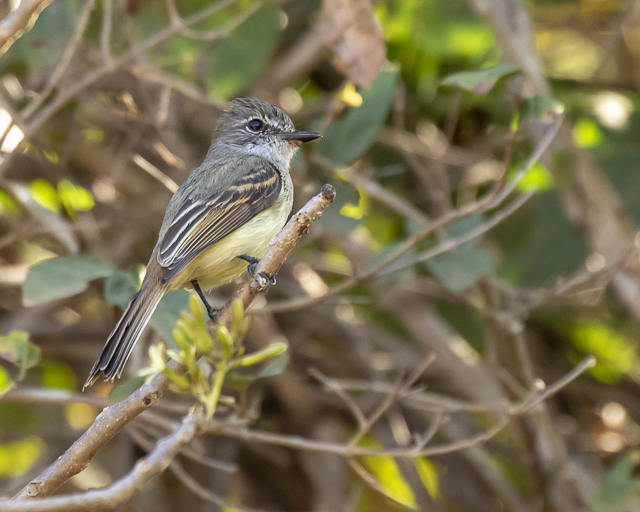
And the understated yet distinctive Flammulated Flycatcher
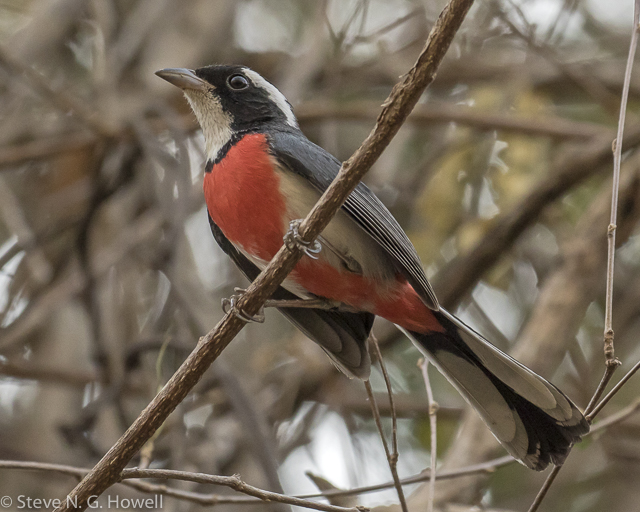
Whereas the second group drank in a point-blank, male Red-breasted Chat
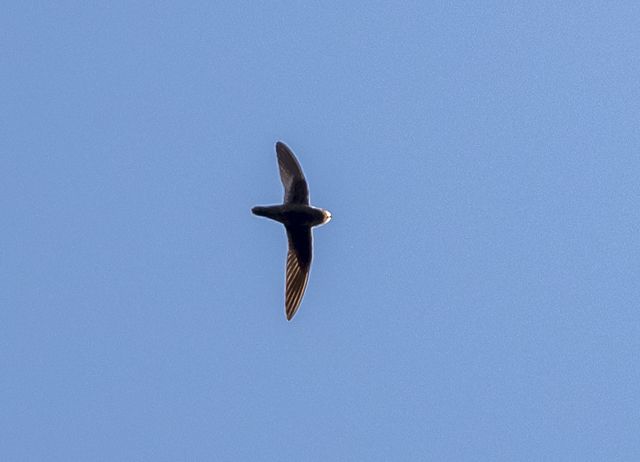
And was lucky enough to encounter the little-known White-fronted Swift, seen only a handful of times since being described as new to science in 1992. Photo by participant Li Li.
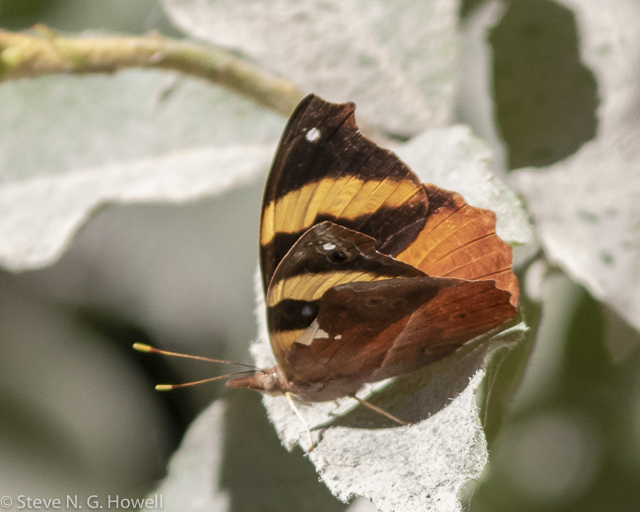
Non-avian highlights included numerous colorful butterflies, such as this Common Banner...
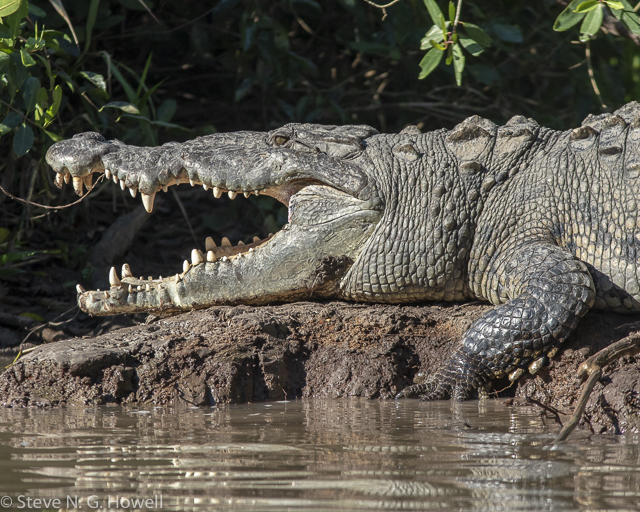
And some extremely large American Crocodiles.
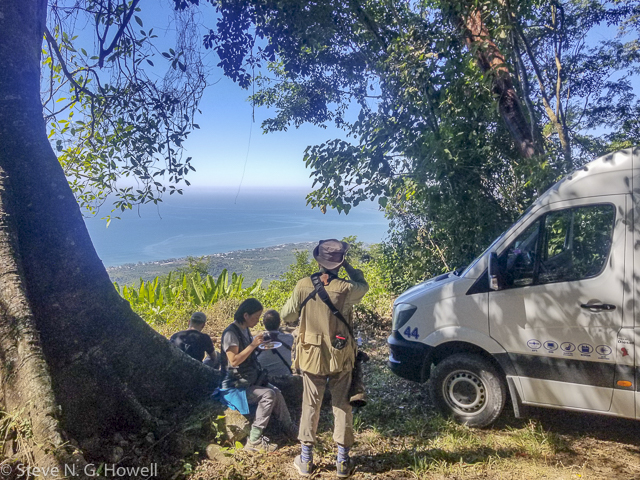
Here, our last picnic lunch in the field after a wonderful getaway to sunshine, great food, friendly people, and colorful birds before reluctant return to Covid madness in the “real world”
January 25:
Gavin Bieber just finished up a very enjoyable winter Florida tour
We began our winter Florida tour this year in Orlando, which allowed us access to the central and northern parts of the state which our normal spring tour doesn’t cover. On the famous Space Coast we connected with out of range Black-headed Gull and Cinnamon Teal, and enjoyed our first views of such iconic Florida species as Wood Stork and American Alligator.
A day trip up around Gainesville produced absolutely phenomenal views of an unusually cooperative Henslow’s Sparrow as well as close views of hunting Snail Kites, brassy coloured Fulvous Whistling Ducks and a seemingly inexhaustible number of Palm Warblers.
On the drive down to Fort Myers we cut through the middle of the state and were successful at tracking down a pair of stately Whooping Cranes, as well as this handsome Crested Caracara. This Painted Bunting and several Short-tailed Hawks put on a show in the Fort Myers area as well. Enroute to the deep south of the state we stopped in near the south end of Lake Okeechobee to look at a few Tricoloured Munias that seem to be nesting in the thick grasses that ring the lakeshore.
For the final leg of the trip we birded around the Everglades National Park and suburban Miami, where we finally had warm enough weather for a few lively insects like this handsome Halloween Pennant, as well as some decidedly tropical looking birds like Purple Gallinule and the introduced Red-whiskered Bulbul.
We covered quite a bit of ground during the week, seeing a wide array of Florida’s habitats and birds; 182 species to be exact. As always, Florida isn’t just about the birds, and this year we enjoyed excellent views of American Alligator, a distant frolicking pair of River Otter, lots of introduced but colourful lizards, a good number of butterflies (thanks Greg Greene), odonates and even a few fish! It was a welcome respite from the cold grey winter that gripped much of the country!
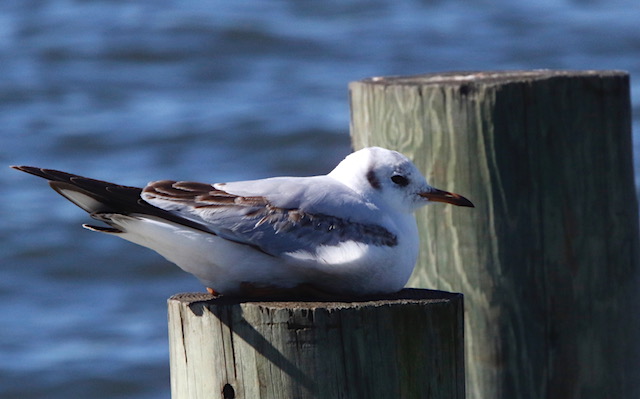
Black-headed Gull
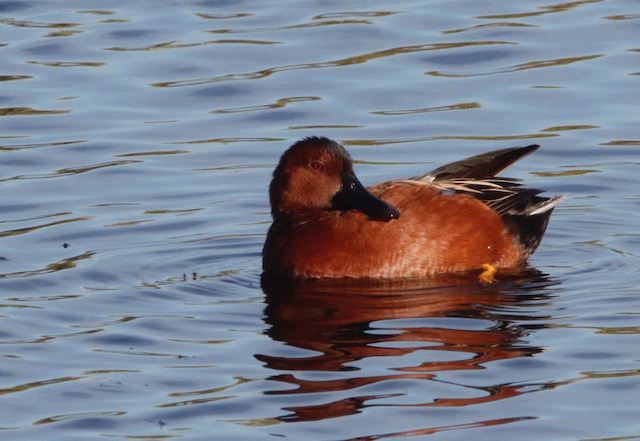
Cinnamon Teal
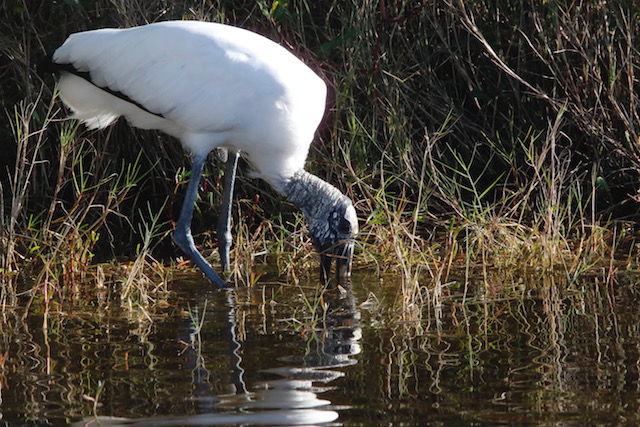
Wood Stork
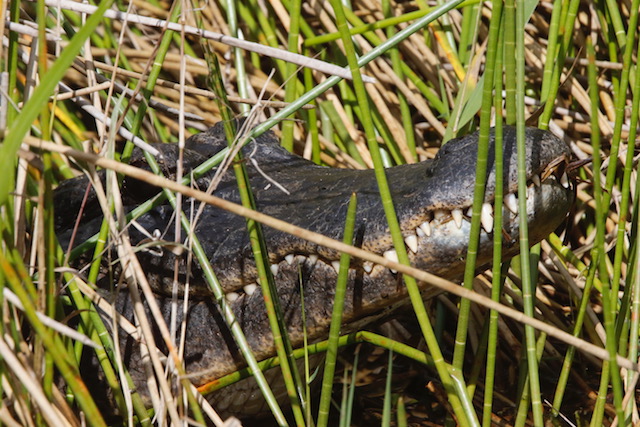
American Alligator
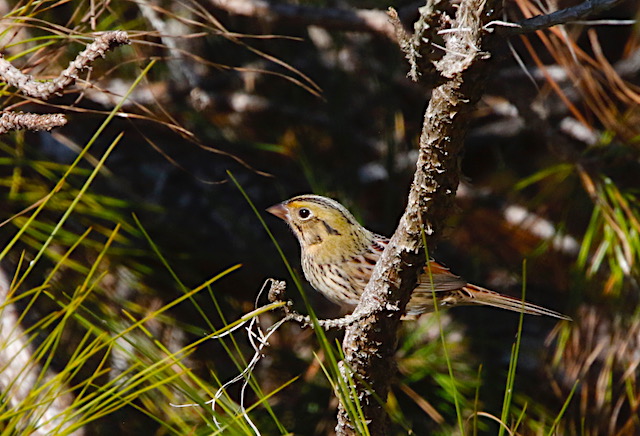
Henslow’s Sparrow
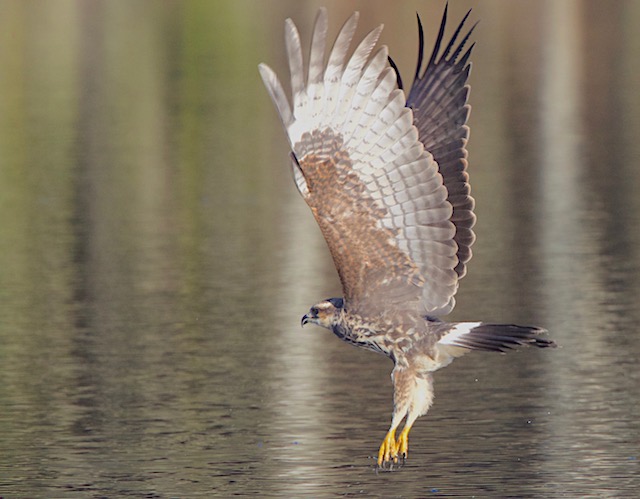
Snail Kite
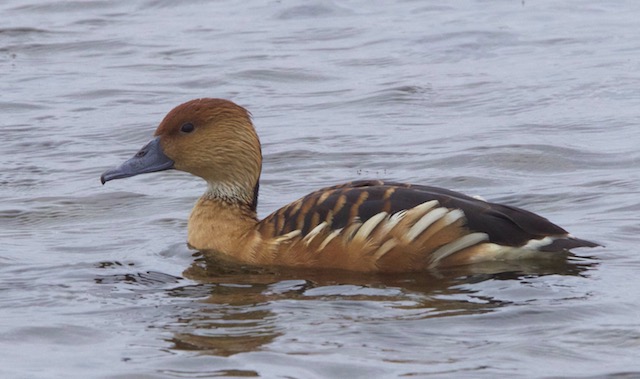
Fulvous Whistling Duck
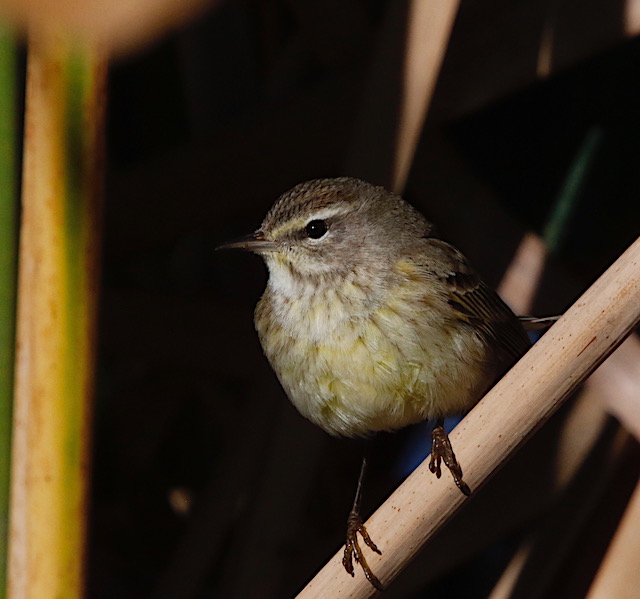
Palm Warbler
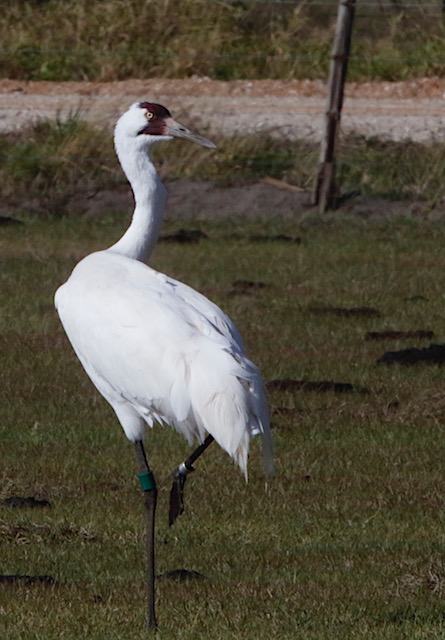
Whooping Crane
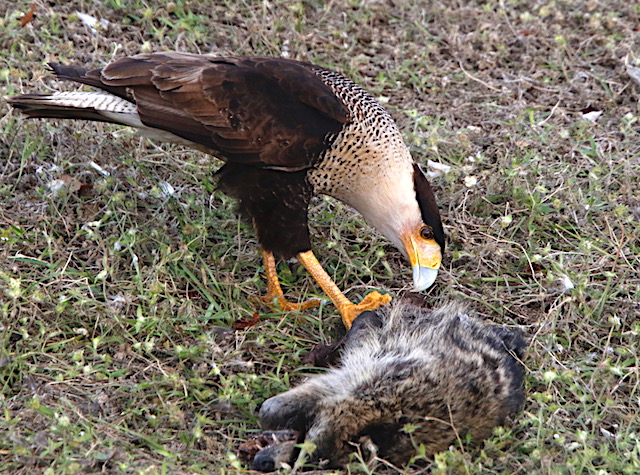
Crested Caracara
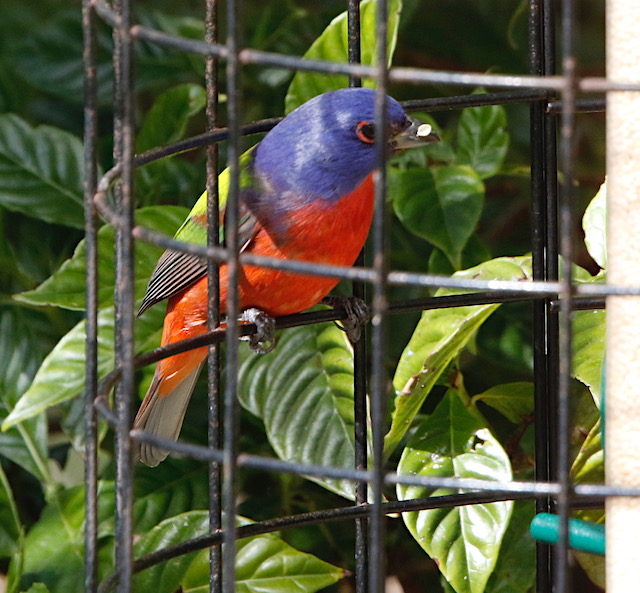
Painted Bunting
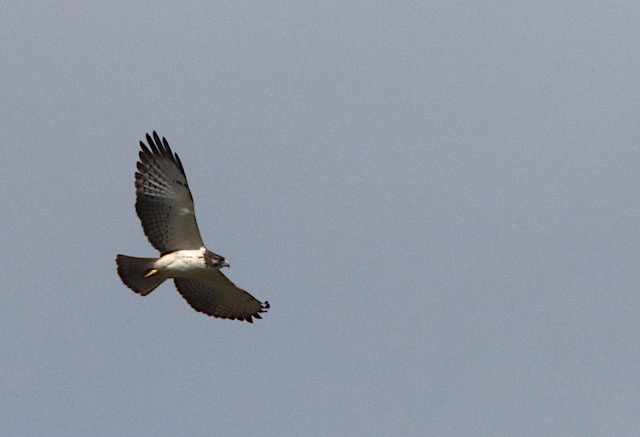
Short-tailed Hawk
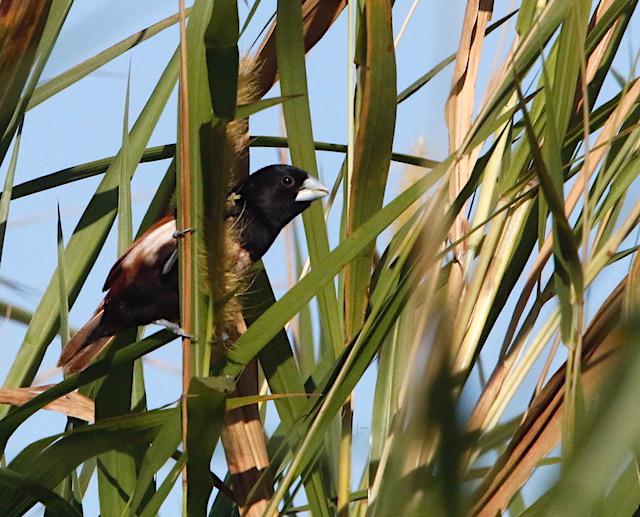
Tricoloured Munia
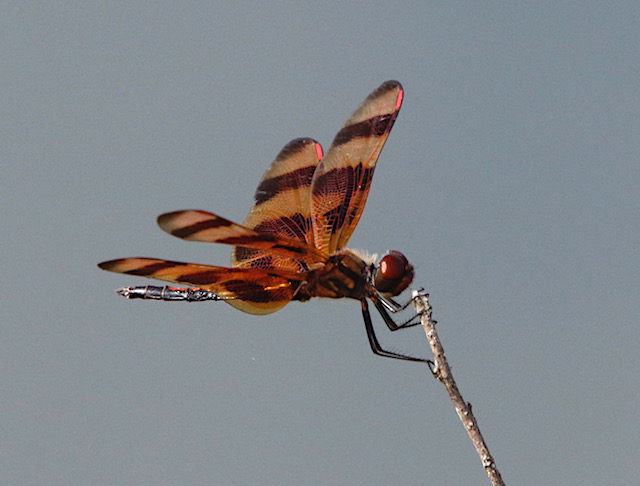
Halloween Pennant
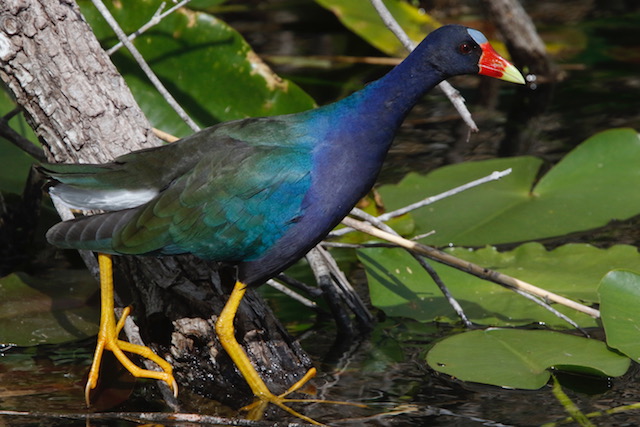
Purple Gallinule
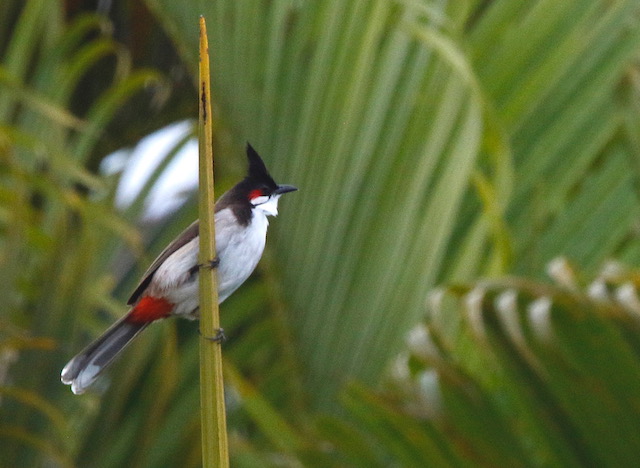
Red-whiskered Bulbul
January 21:
Jake Mohlmann reports from a successful return to Argentina
We just navigated through a hugely successful trip across the southern cone of South America on our latest Argentina expedition. This extensive tour covered the vast pampas grass and wetlands, wind-swept Patagonian steppe, and southern beech forests enshrouding the southern tip of the continental Americas. The scenery was always stunning, and many of the abundant varied habitats offered were thoroughly explored providing an amazing array of regional specialties. One such rarity was the near-endemic Band-tailed Earthcreepers seen on multiple days at Punta Tombo and along the dusty 2-tracks outside of El Calafate. Visiting the barren landscapes around Rio Grande on the island of Tierra del Fuego provided up close and personal views of both juvenile and adult Magellanic Plovers. This year we saw them from the comfort of our comfortable sprinter van as we pulled up to a lakeshore and closely observed this unique shorebird of the southernmost reaches of the planet. The famed Valdez Peninsula seems barren, but the shoreline is filled with life including several colonies of breeding Southern Sea Lions and the bird species that utilize the chance at this ephemeral meal source, such as the 20 Snowy Sheathbills we tallied. Our unforgettable boat trip down the Beagle Channel was filled with nesting pelagic birds including thousands of Magellanic and Imperial Cormorants raising their sea-bound young. Raptors were seen daily and often next to the roadsides. One particularly photogenic species was Cinereous Harrier, sometimes at eye level and quite close. As one heads south the tree line gets lower in elevation. As a result obtaining views of birds normally seen high up with little oxygen are much easier to accomplish. As was the case for an unbelievable encounter with a male Yellow-bridled Finch braving the steep scree slopes outside of Ushuaia. All this makes it hard to believe we packed in so many amazing experiences in just 2 short weeks in southern South America.
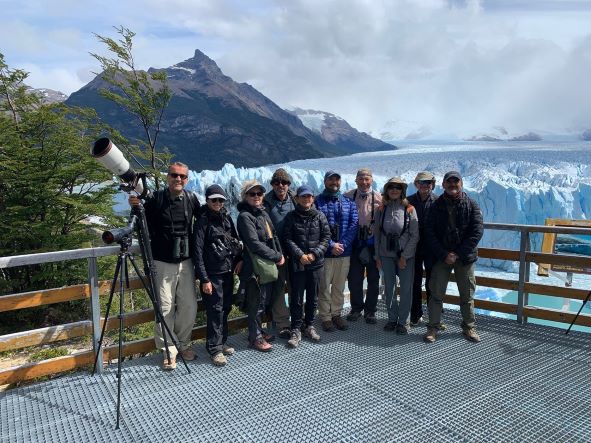
Our excited group after seeing an enormous ice chunk slough off the Perito Moreno Glacier
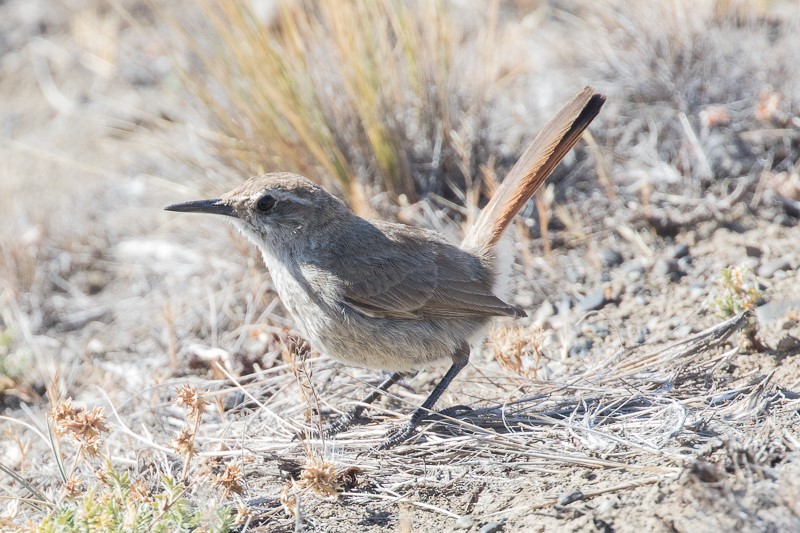
Near-endemic Band-tailed Earthcreepers crossed our paths
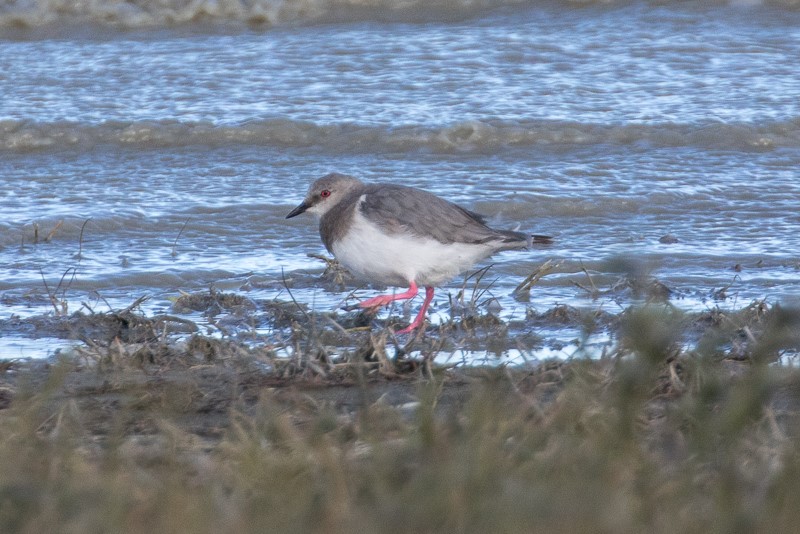
Magellanic Plover; A Magellanic Plover feeds on the shores of a salty lagoon
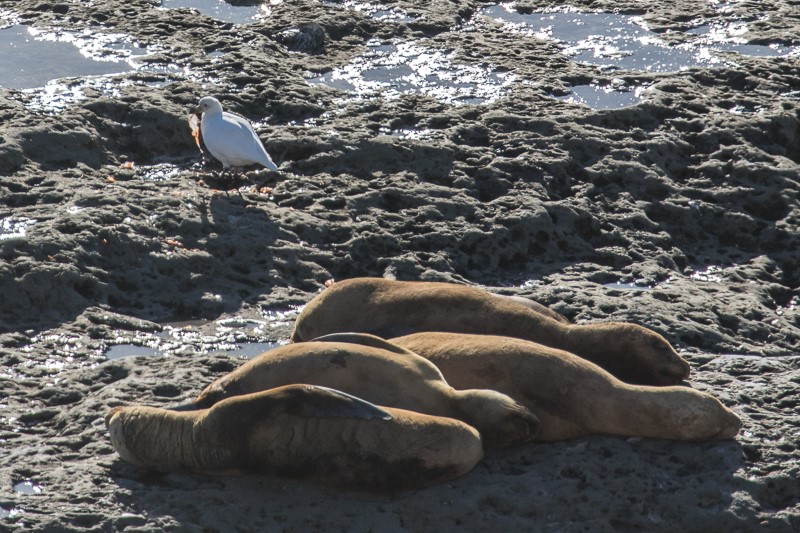
Snowy Sheathbill and Southern Sea Lions; A Snowy Sheathbill feeds on an afterbirth in a Southern Sea Lion colony
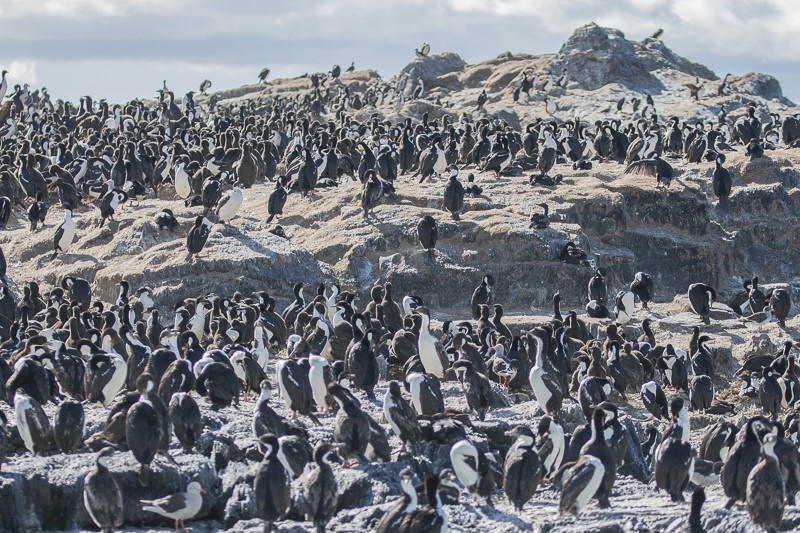
Imperial Cormorants and Ushuaia; Productive Imperial Cormorant colonies along the Beagle Channel
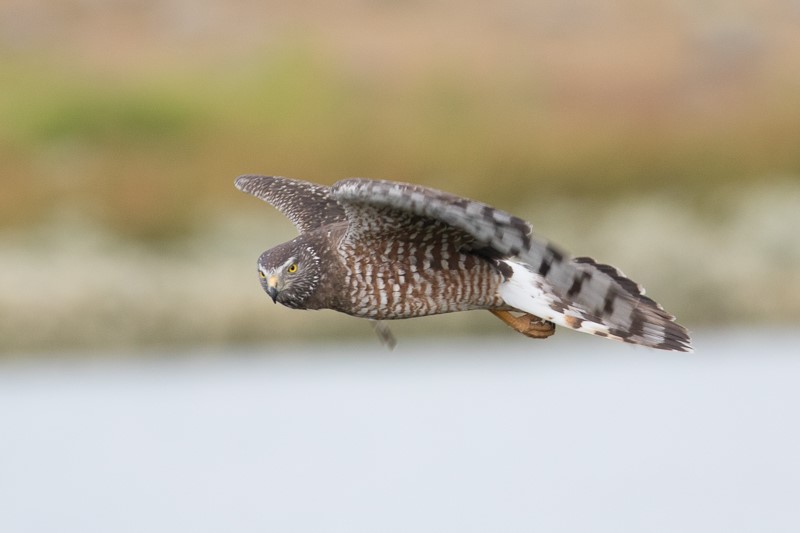
A Cinereous Harrier gave us multiple amazing photograph opportunities
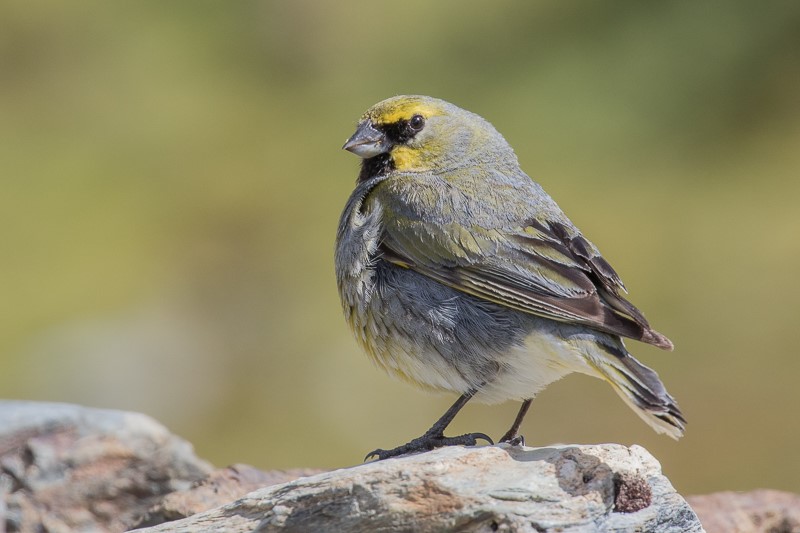
This Yellow-bridled Finch came within a meter of some lucky tour participants
January 7:
Rich Hoyer completed his wonderful Christmas in Oaxaca tour recently.
It can’t have been a surprise that the Red Warbler was mentioned by the most participants as one of their favorite birds on this year’s Oaxaca at Christmastime tour – it’s always an arresting sight to see such a jewel in the pine-oak forests.
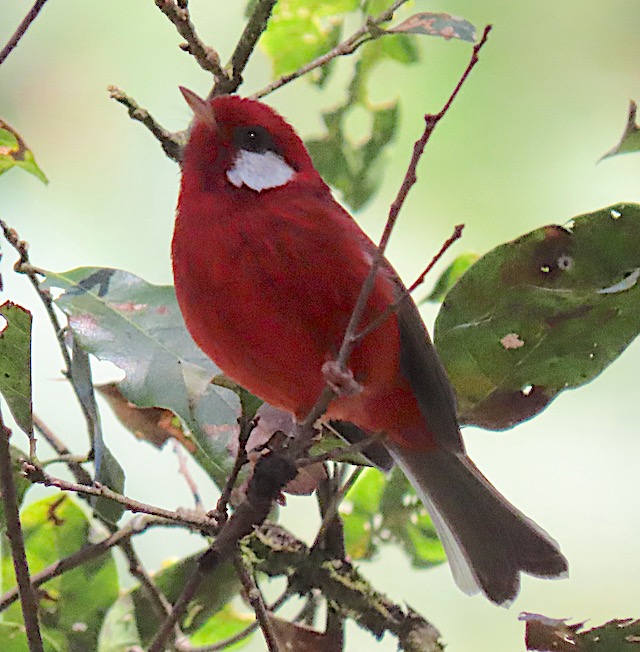
The first one we saw was up high and difficult, the second was a bit better but in the dark forest understory, the third was brilliant and gorgeous, the fourth was just as cooperative, and then we saw a fifth and realized that there might be too much of a good thing.
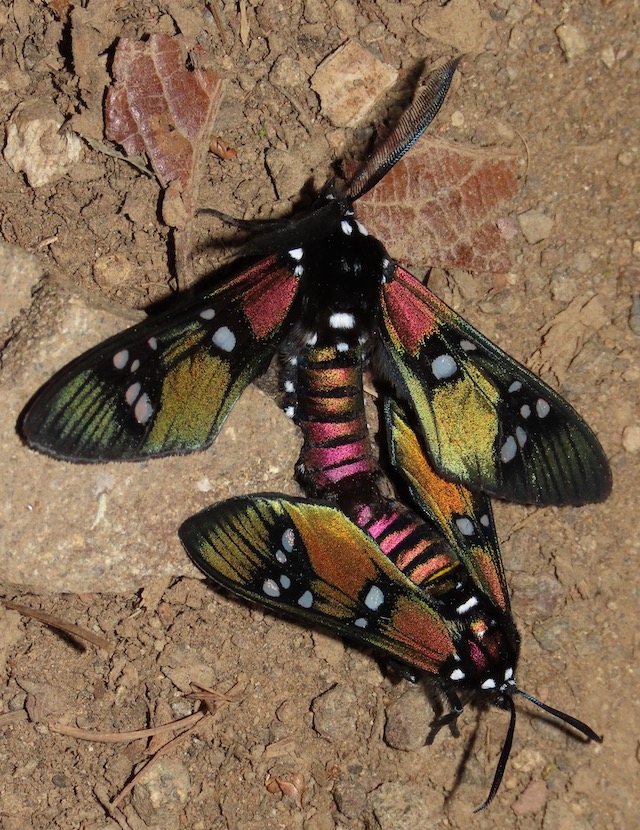
So we turned our attention instead to a Golden-browed Warbler and flock of Dwarf Jays until we were drawn by the stunning beauty of a pair of Princely Tiger Moths mating in the middle of the road.
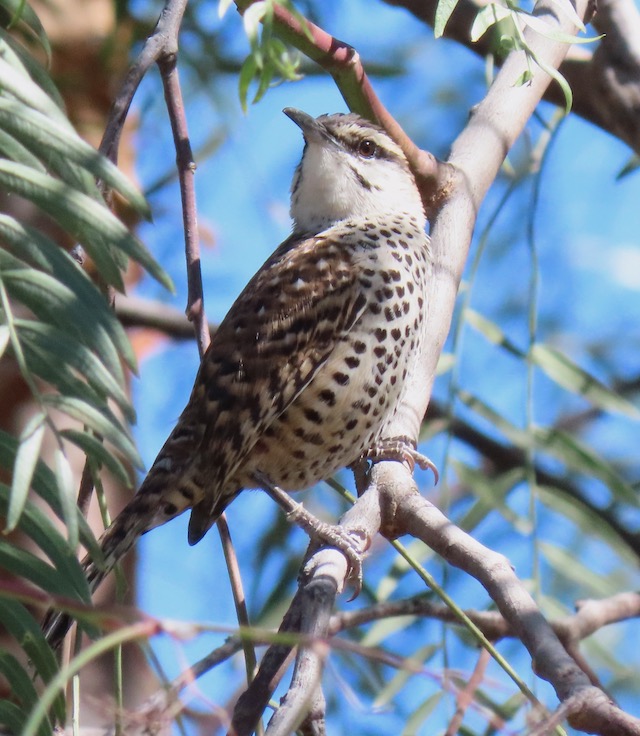
Birds from the drier parts of the Oaxaca Valley included great views of the Mexican endemic Boucard’s Wren, not quite as cactus-bound as our own Cactus Wren, but certainly reminiscent of its close cousin.
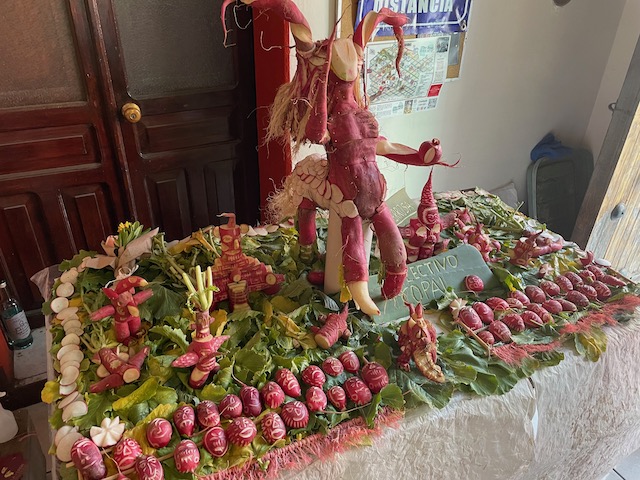
The Covid situation in Mexico was taken very seriously, even though case numbers were quite low during our visit. As a result, the radish carving competition of Noche de Rábanos was officially canceled only a day before the event on December 23. Nevertheless, at the last minute, we heard that some were being displayed at various hotels and cafés, and we got to visit three and learn from their creators about the process and symbolism portrayed in their art.

Presumably another casualty of the pandemic was the non-announced closure of Yagul ruins, but we did get to enter the fascinating and more modern ruins of Mitla.

The studio of the master rug weaver Nelson Perez Mendoza was open for business, and we gratefully received a brief explanation of the natural fibers and dyes he uses in the yarn for his award-winning and truly inspirational weavings, some of which we then either coveted or bought.
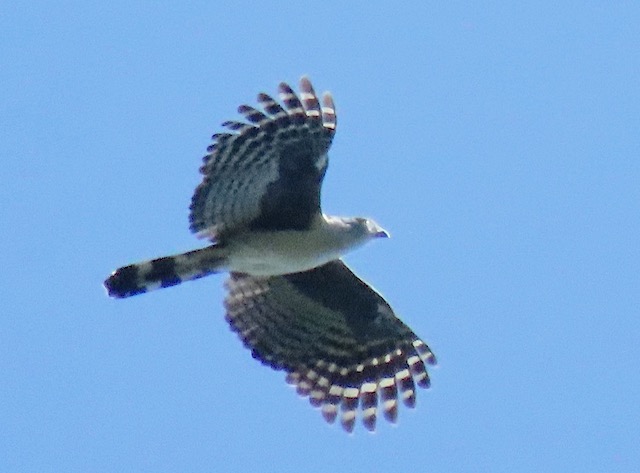
Our three-day side trip to Tuxtepec was marred only by sunny weather – such beautiful conditions certainly make for comfortable birding, but they also result in a lack of flock activity at higher elevations. No matter the weather, birds at the lower elevations were as busy as ever, and the sun also created perfect soaring conditions, allowing for the addition of a rare Gray-headed Kite to the master list for this tour, which now includes 17 years of data.
December 16:
Gavin Bieber completed his 3-tour traverse of Panama with a stay in the Darien region
Our 2021 Panama Darien tour immediately followed the western trip through the Chiriqui Highlands and Bocas del Toro. The vast and sparsely populated Darien Province in the far east of the country contains some of the most remote and wild lowland and montane wilderness remaining in Central America. Our base for the week was the very comfortable Canopy Camp. We spent several days exploring the camp trails and various spots along the end of the Pan-American highway, where patches of forest and more open fields revealed widespread birds such as Chestnut-headed Oropendola and the hard-to-actually-see Black-capped Pygmy-Tyrant as well as more localized ones such as the impressive Barred Puffbird, Greater Ani, and the globally scarce Dusky-backed Jacamar. Near the town of Yaviza which sits at the terminus of the Pan-American Highway we tracked down the only known pair of Bicolored Wrens on the continent and enjoyed a vocal and visual show from the always charismatic Donacobius. The grounds around the camp were excellent for hummingbirds, and we enjoyed multiple views of species such as Long-billed Starthroat, Violet-bellied Hummingbird and the incredibly cute Rufous-crested Coquette. A few stray non-birds crossed our path too, such as this incredibly attractive pair of Rainbow Ameivas, and a host of interesting insects like this pair of Carmine Skimmers.
On one day we took boats out into Embera territory past the end of the road which gained us access to a recently discovered Harpy Eagle nest, surely the highlight species of the trip for most. Over the course of the week we encountered 263 species of birds including 15 species of antbirds, an impressive 13 species of herons and 35 species of everyone’s favorite bird family; the new world flycatchers! These areas in the Darien are little explored and I am sure that the creation of a comfortable lodge here will produce a lot of new discoveries. I very much look forward to returning next fall!
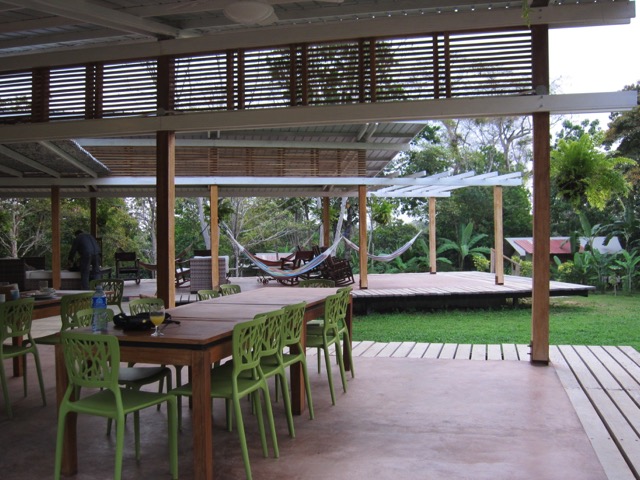
Canopy Camp Common Area
Chestnut-headed Oropendola
Black-capped Pygmy-Tyrant
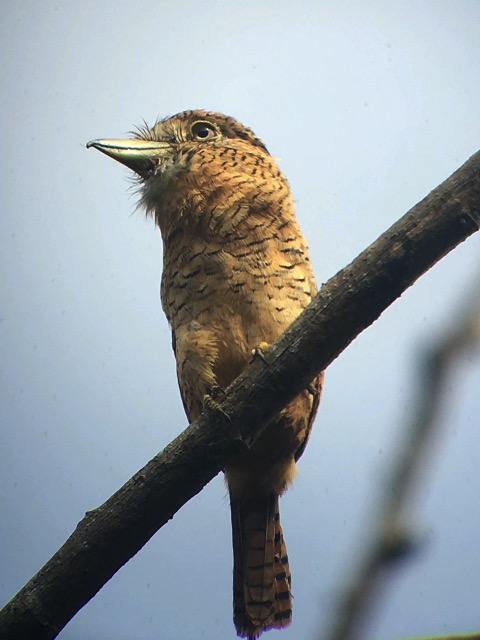
Barred Puffbird
Greater Ani
Dusky-backed Jacamar
Bicolored Wren
Donacobius
Long-billed Starthroat
Violet-bellied Hummingbird
Rufous-crested Coquette
Rainbow Ameivas
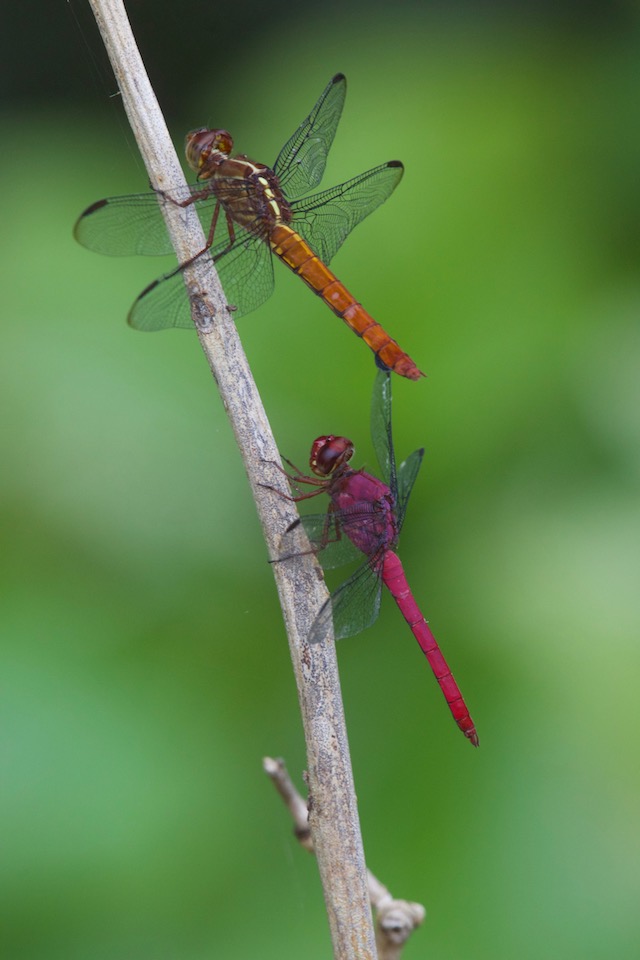
Carmine Skimmers
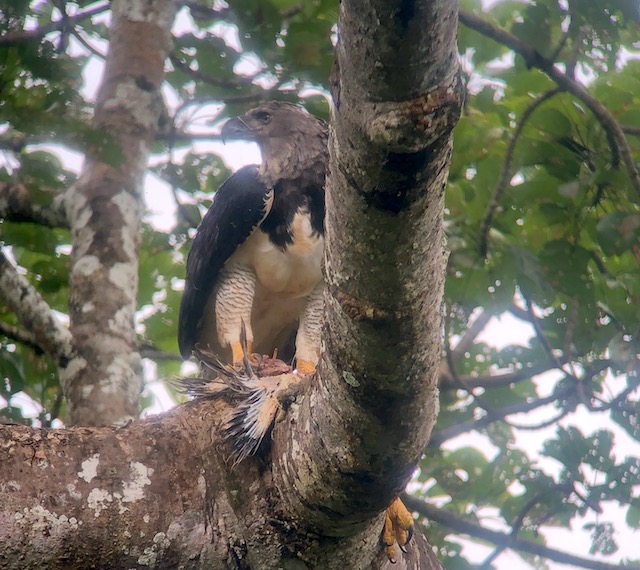
Harpy Eagle
December 16:
Gavin Bieber has concluded our recent Panama: Western Highlands and Bocas del Toro tour
The 2021 WINGS trip to Western Panama wrapped up to great acclaim. It’s surely a testament to the diversity of habitats and of birds that exist in this relatively small geographic area that over the course of eight birding days we detected 341 species between the Caribbean lowlands and Pacific-slope Highlands. We started out in the Bocas del Toro Archipelago, where the semi aquatic town of Bocas served as our access point to the idyllic Tranquillo Bay Ecolodge. Traveling largely by boat we ventured out to other islands and the adjacent forested lowlands where we were introduced to a wealth of birds and other animals amid the picturesque archipelago and humid Caribbean foothills. A few of the trip highlights from Bocas and the lowlands this year include the displaying pairs of Red-billed Tropicbirds at a small offshore colony, a male Three-wattled Bellbird just a few hundred yards from the lodge, and the Collared Plovers on the beach at the mouth of the Changinola River.
The second half of the trip found us exploring the cool and heavily forested highlands around the impressive 11400-foot Baru Volcano where new birds like Resplendent Quetzal, White-throated Mountain-Gem, Long-tailed Silky-Flycatcher and Costa Rican Pygmy-Owl and a fantastic Panama-style Thanksgiving feast awaited. Our last day was down in the pacific lowlands where we eventually caught a return flight to Panama City from the town of David, but not before finding a wealth of pacific slope birds and such local specialties as Lesson’s Motmot, Spot-crowned Euphonia and Silver-throated Tanager. I very much look forward to returning to this dynamic and bird-rich region annually!
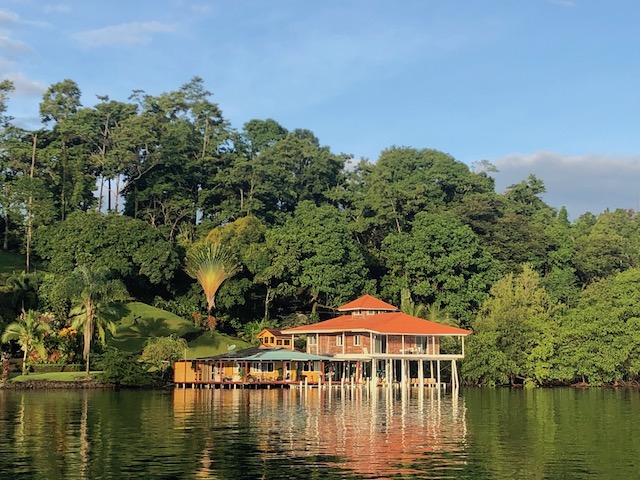
semi aquatic town of Bocas, Panama
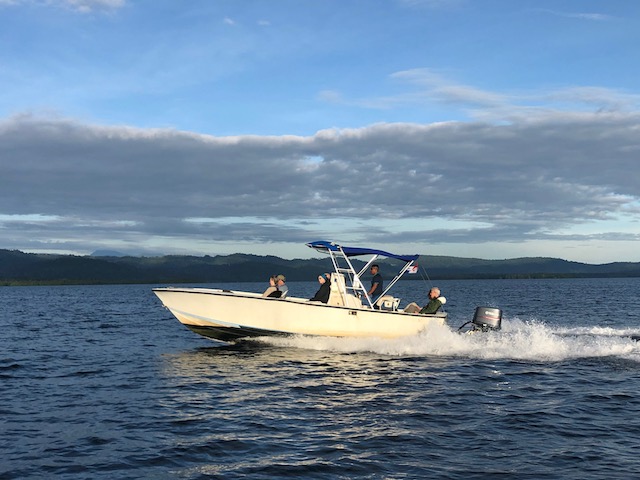
travel is by boat
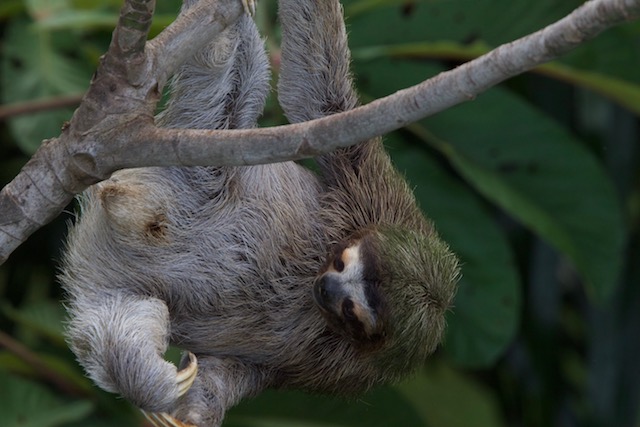
Brown-throated Three-toed Sloth
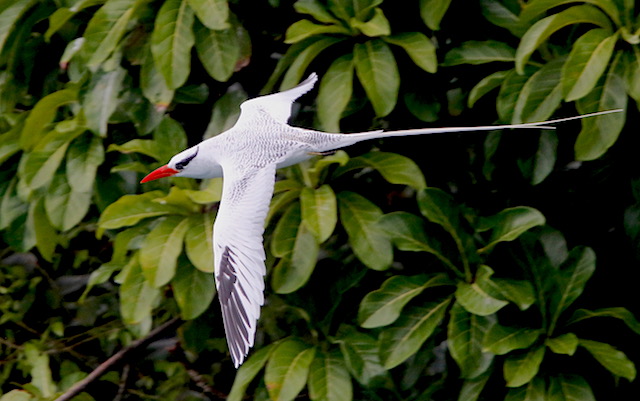
Red-billed Tropicbird
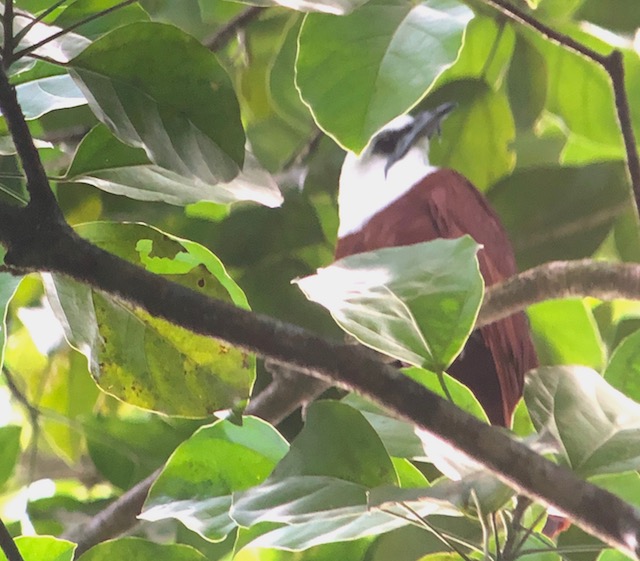
Three-wattled Bellbird
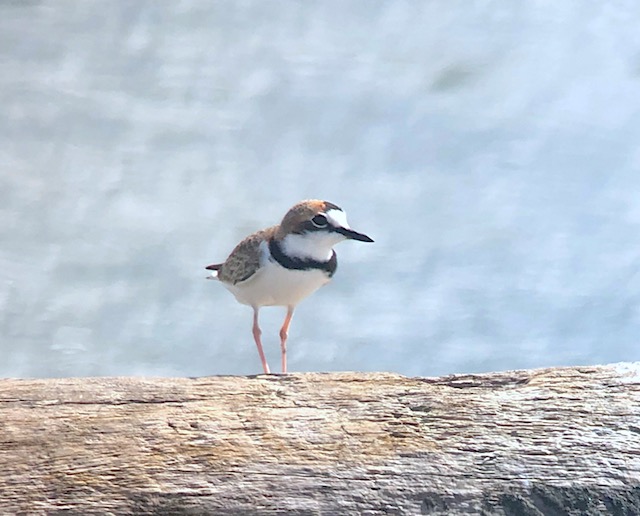
Collared Plovers on the beach at the mouth of the Changinola River
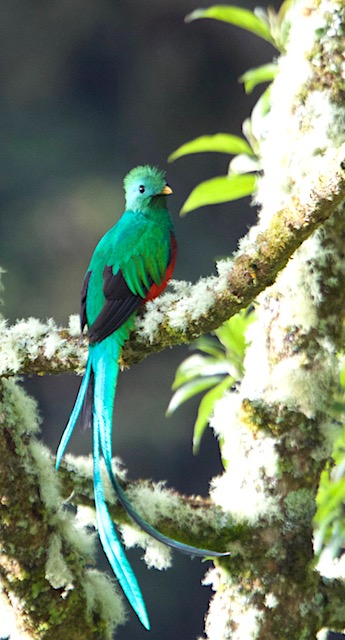
Resplendent Quetzal
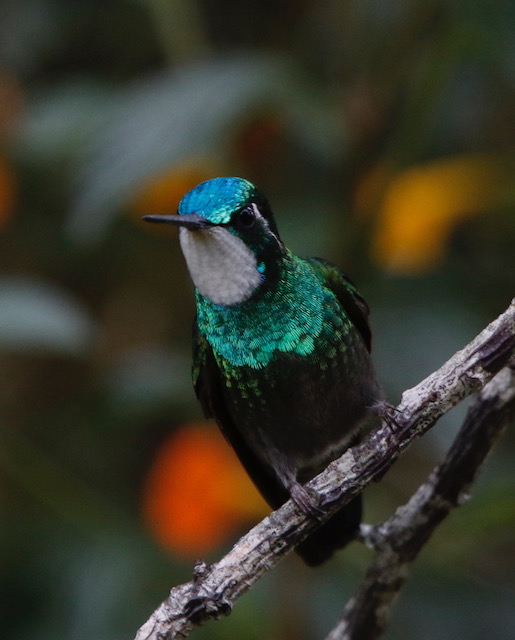
White-throated Mountain-Gem
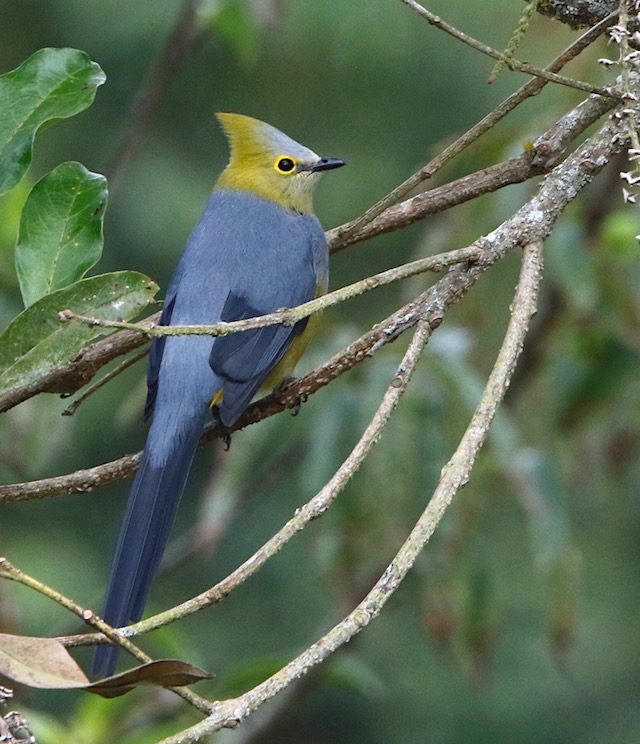
Long-tailed Silky-Flycatcher
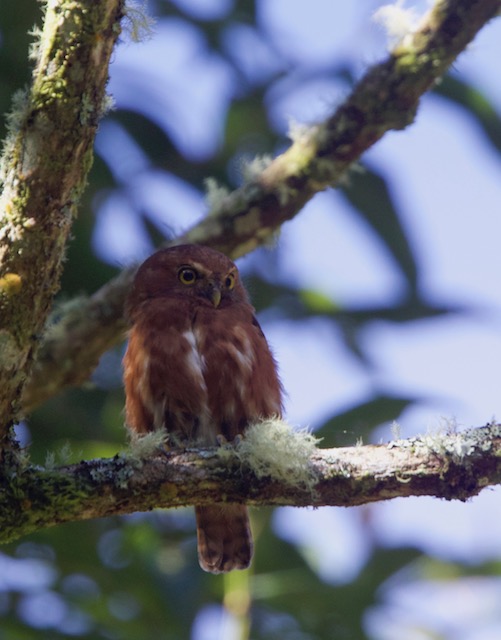
Costa Rican Pygmy-Owl
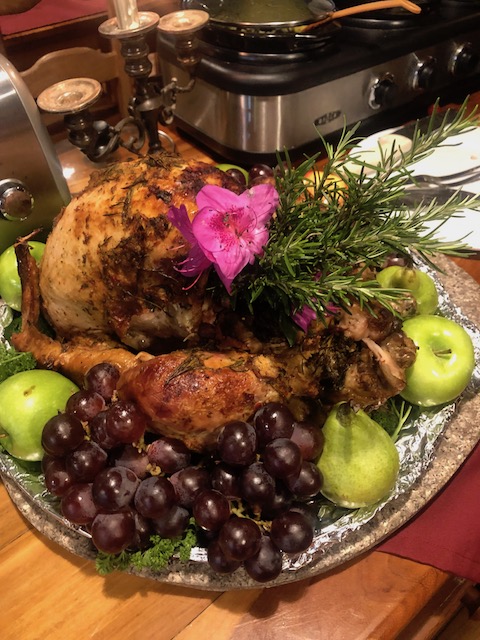
Panama-style Thanksgiving feast at Los Quetzales Lodge
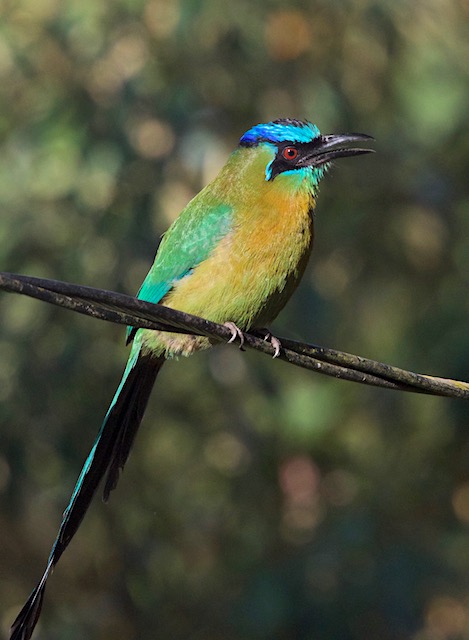
Lesson’s Motmot
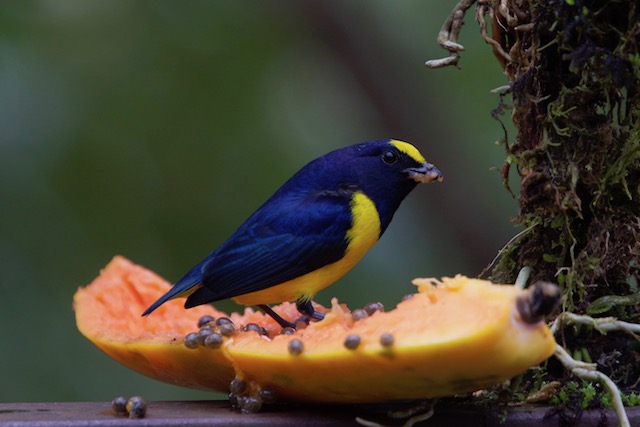
Spot-crowned Euphonia
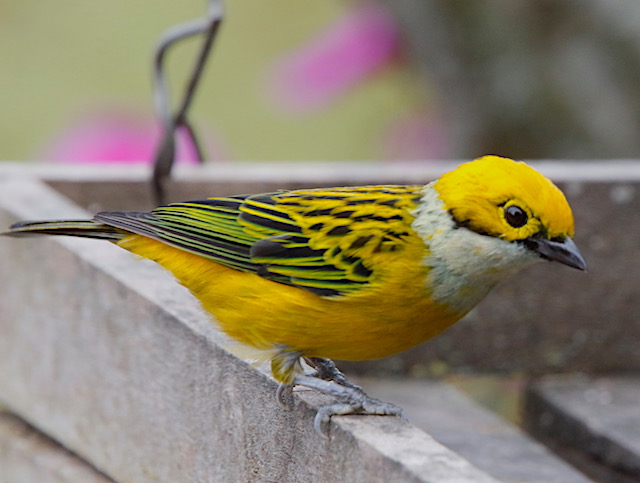
Silver-throated Tanager
December 14:
Gavin Bieber reports from the famed Canopy Tower of Panama
Our short fall 2021 trip to the famous Panama Canopy Tower was packed with birds and several charismatic mammal species including almost daily visits to the tower from Geoffrey’s Tamarins and a Western Lowland Olingo.
Around the tower we located well over two hundred species of birds, including gaudy and overtly tropical birds such as Black-throated Trogon, Collared Aracari Orange-chinned Parakeet and Black-cheeked Woodpecker. Pipeline Road, a signature site for lowland forest in Central America was excellent this year, with point-blank views of Ocellated Antbird and Streak-chested Antpitta.
The day trip up to the (relative) highlands of Cerro Azul produced a wonderful Blue Cotinga, plentiful butterflies such as this handsome Sara Heliconian and a surprise in the form of this Fasciated Tiger-Heron.
This tour continues to impress me, as the diversity and richness of the region, paired with ease of access and the comforts and uniqueness of the tower make for a truly wonderful experience.
Collared Aracari
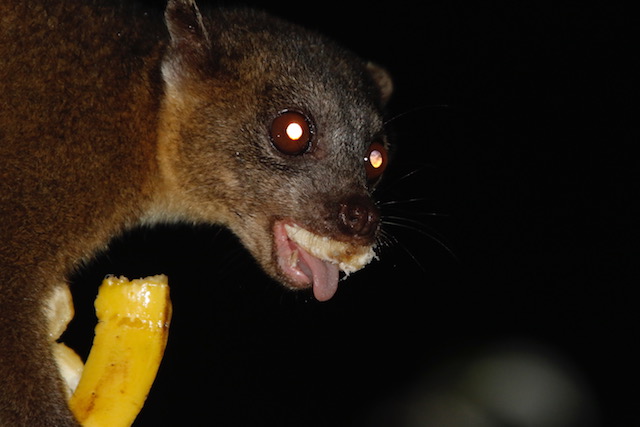
Western Lowland Olingo
Black-cheeked Woodpecker
Black-throated Trogon
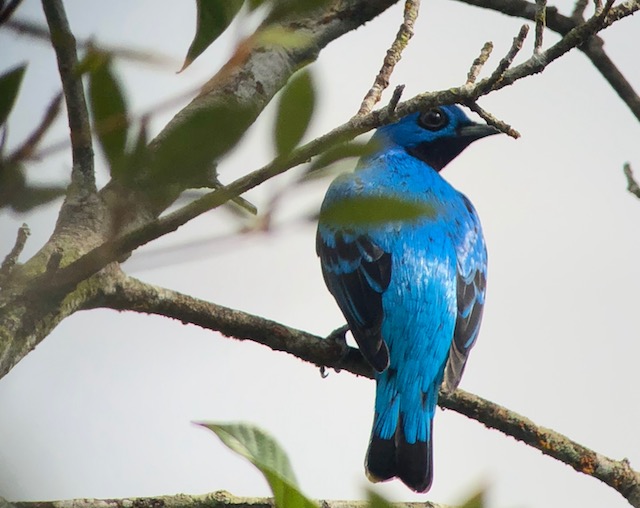
Blue Cotinga
![]()
Sara Heliconian
Orange-chinned Parakeet
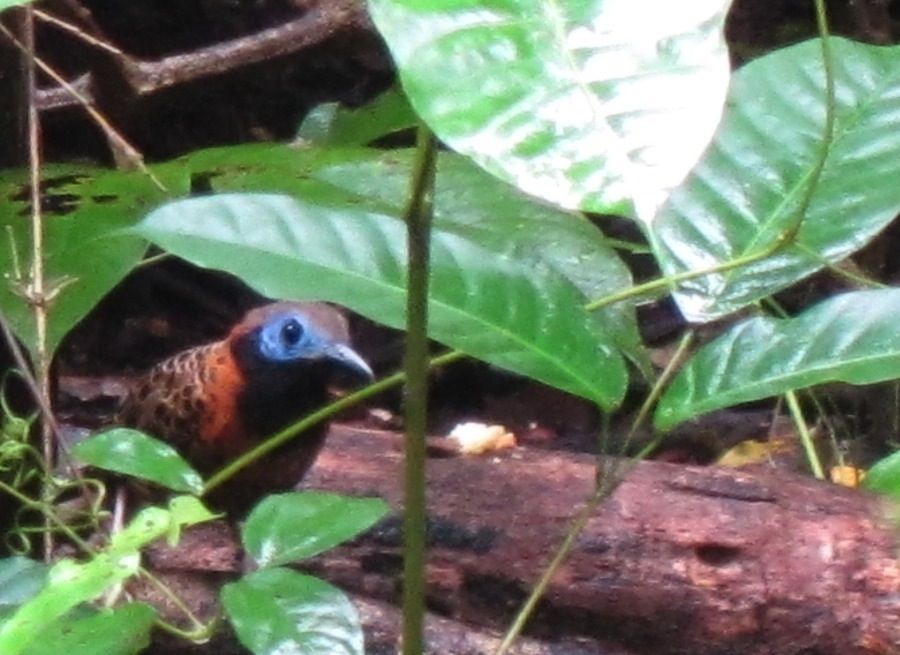
Ocellated Antbird
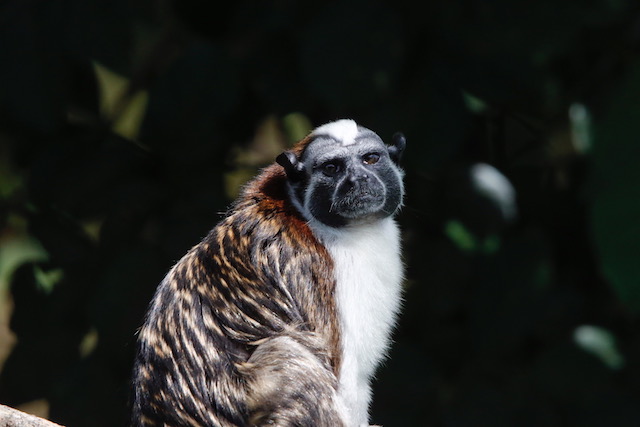
Geoffrey’s Tamarin
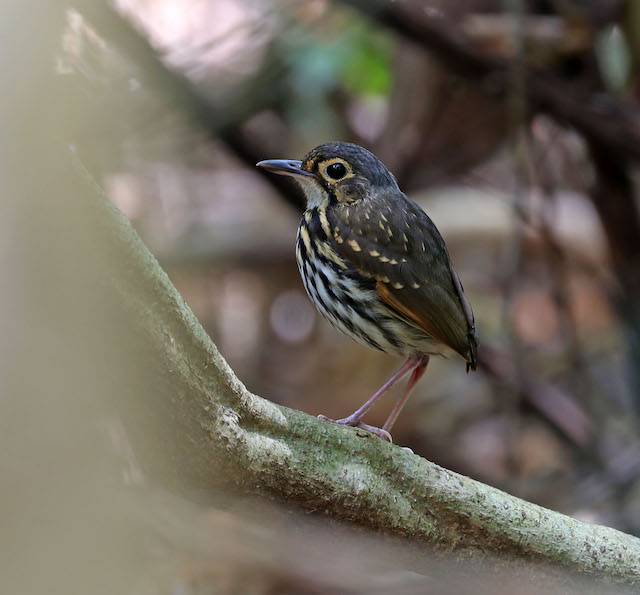
Streak-chested Antpitta
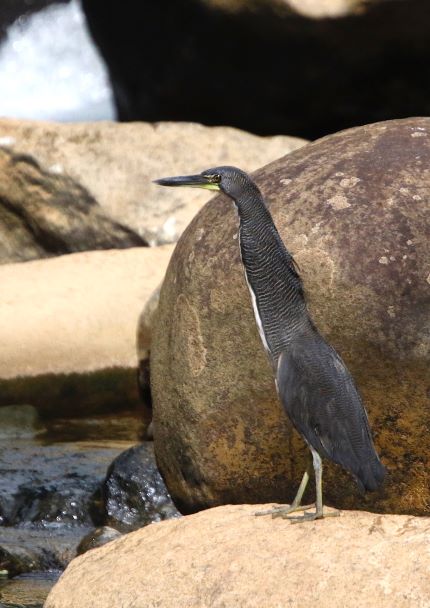
Fasciated Tiger-Heron
December 13:
Rich Hoyer recently finished an excellent tour to the Yucatan Peninsula in Mexico
The birding in the Yucatan Peninsula on this year’s tour was simply fun. Everywhere were reliable numbers of our North American breeding species – Magnolia Warblers and White-eyed Vireos dominated almost every stop, but Northern Parulas, American Redstarts, Hooded Warblers, Least Flycatchers, and so many others made every stop a delight.
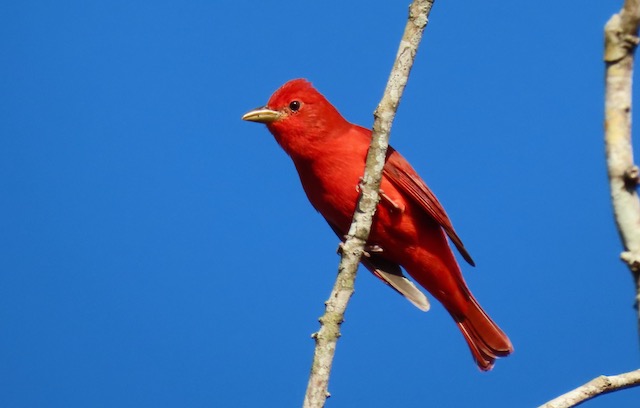
This Summer Tanager made it to the short list of favorites by being so cooperative.
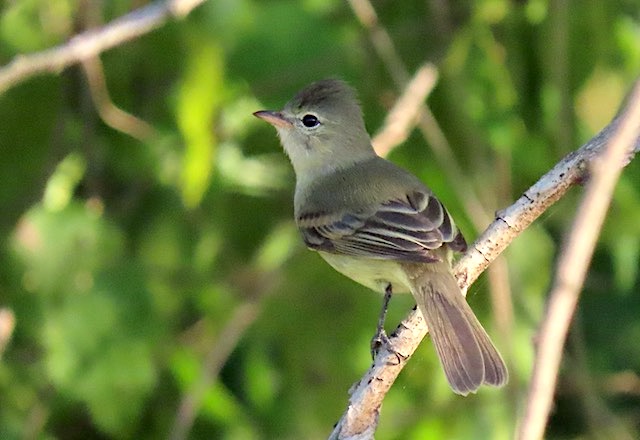
Amongst all the migrants were good numbers of tropical residents, such as furtive Bright-rumped Attilas, chattering Red-crowned Ant-tanagers, primped Turquoise-browed Motmots, rambunctious Keel-billed Toucans, and this cheeky Northern Beardless-Tyrannulet that arrived to mob one of many Ferruginous Pygmy-Owls we found.
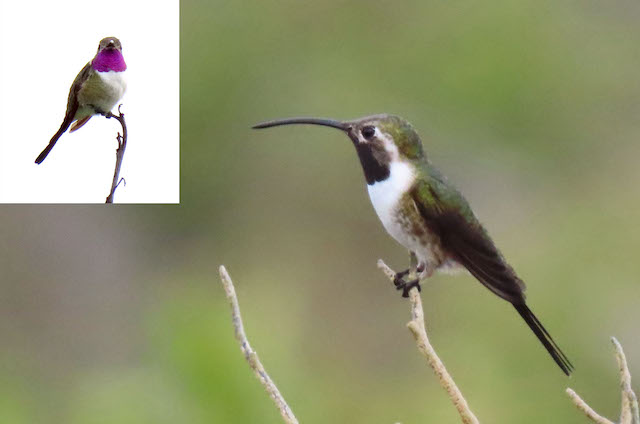
One thing that makes this region special are the regional endemics, and we saw all the expected ones – Yucatan Wren, Yucatan Gnatcatcher (the recent split from White-lored), Black Catbird, and many others. Mexican Sheartails were common this year, though the amazing color of the male’s gorget was visible only if the light was just right.
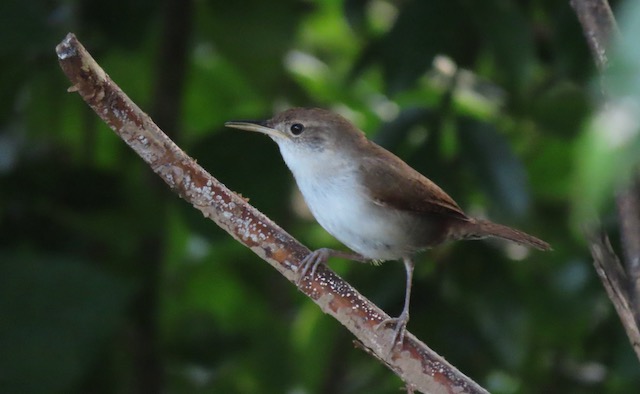
We also scored all the endemic species and the most distinctive subspecies on Cozumel with not too much trouble, and the Cozumel Vireo was a popular bird for the group. After having such great views of and listening to the song of this amazingly distinctive endemic subspecies of House Wren (Troglodytes aedon beani), we were all left wondering only when, not if, it will be split.
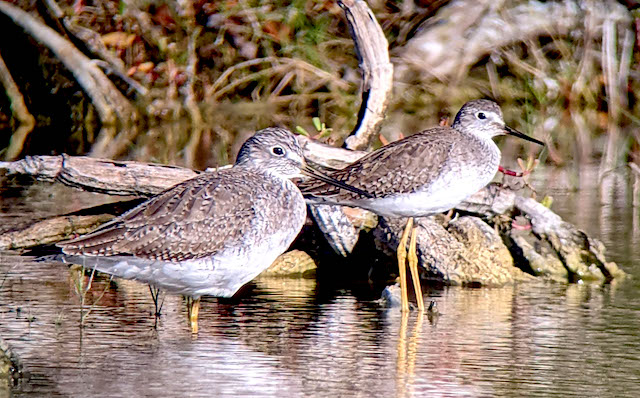
Water birds were a big part of this year’s tour, with our newly revised itinerary giving us a full day and a second morning in the Rio Lagartos area, where we tallied eleven species of heron and egret and 24 species of shorebird. A close comparison of Greater Yellowlegs and Lesser Yellowlegs like this is quite a treat. (photo by Rich Bayldon)
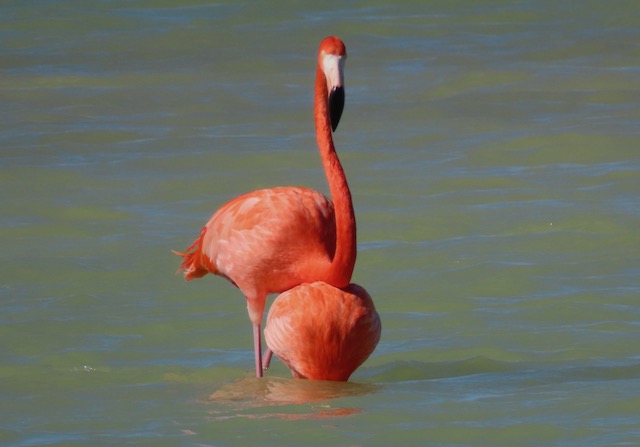
We estimated well over 1000 American Flamingos on the salt ponds, and this pair provided for a racy moment as the male came up from behind and mated with the female while she continued to act as if feeding.
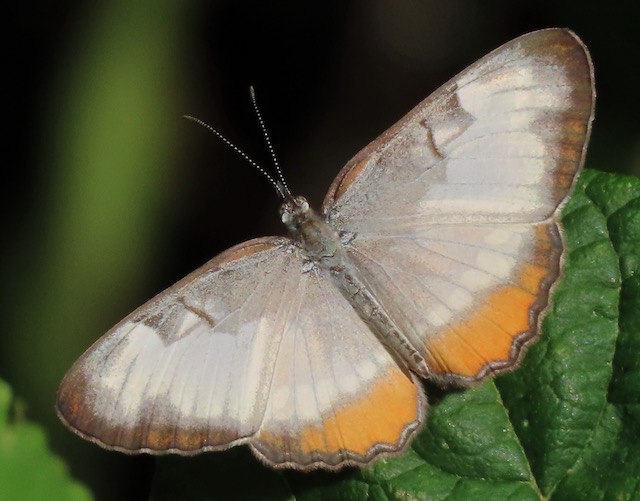
There was never a dull moment, with so many other interesting critters drawing our attention, such as polydesmid millipedes, two species of army ants, and colorful butterflies, such as this Northern Mestra.
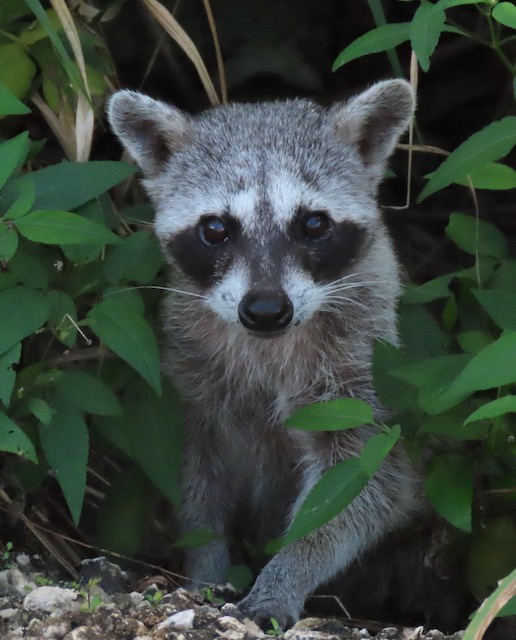
Unlike the mainland species, the smaller and endemic Cozumel Raccoon was charming in its almost polite, demure way of asking for a handout.

